Trip Logs
Cruising the Greek Isles Trip Log: September 9–18, 2021

September 9, 2021 | Athens, Greece
Today, we converged in the city of Athens to mark the beginning of a much-anticipated expedition to the Greek Isles. For most of us, it was the first journey in many months. Though we were still learning to navigate these new and complicated times, the excitement was palpable. With over 6,000 islands scattered throughout the Aegean and Ionian seas, 227 of which are inhabited, it would take a lifetime to fully appreciate the depth and diversity of this enchanting area of the world. We couldn’t wait to get started.
Arriving from all corners of the world, we began our stay at the beautiful Grand Bretagne Hotel. Originally constructed in 1842, this glamorous institution retains the opulent style of its time with stained glass ceilings, potted palms and antique etchings lining the corridors. Overlooking the Parliament and the National Gardens, this neoclassical gem was the ideal location to explore this remarkable city. The morning was marked by the exhilaration of the EKO Acropolis Rally, its cars racing through the heart of Athens for the first time in history, passing just in front of the hotel itself.
We spent the afternoon settling into our rooms, resting and enjoying leisure time. Some of us enjoyed lunch at the lovely rooftop café, a swim in the pool or a wander through the narrow streets of the historic Plaka neighborhood.
In the evening, we donned our stylish masks and gathered for a welcome cocktail reception in the Grand Ballroom of the Hotel, getting to know each other while receiving a brief introduction to the expedition team members who would accompany us on our voyage.

September 10, 2021 | Athens
We awoke to our first full day in Athens, home to a third of Greece’s population and a rich cultural history spanning some 3,400 years. In this vibrant and bustling city, ancient monuments blend harmoniously with modern cafés & lively restaurants, making it a fascinating combination of old and new.
The morning was filled with excitement, as we set off in different directions to explore some of Greece’s most monumental archeological sites. Some of us chose to explore the city’s highlights, beginning at the Acropolis, an ancient citadel located high upon a flat-top rock above the city of Athens. The Acropolis contains the remnants of several historically significant buildings, the most famous being the Parthenon. Perhaps the finest achievement of Classical Greek architecture, the Parthenon was the first and greatest project of Pericles’ Athenian Golden Age and the highlight of the Acropolis. As we made our way down the steep slope that leads back into the city streets, we enjoyed a stroll through the market area and the historic Plaka neighborhood, pausing for a rest at a local coffee shop, a meat and cheese tasting, and a lesson in traditional Greek dance.
Some of us opted to head outside the city, starting with a spectacular scenic drive to the Peloponnese peninsula, with views of the Argo Saronic islands and lush green pine trees, followed by visits to several important archeological sites in the lovely region of Argolis. We stopped at the 19th-century Corinth Canal, an engineering marvel connecting the Gulf of Corinth with the Saronic Gulf in the Aegean Sea. We cut through the Isthmus of Corinth a narrow waterway separating the Peloponnese from the Greek mainland. We arrived at the Ancient Theater of Epidaurius, a UNESCO World Heritage Site renowned for its acoustics. We took time to climb the many steps for a staggering view from the top, imagining a time when 14,000 spectators sat transfixed by the performances below. Our last stop was the archeological site of Mycenae, a former military stronghold that dominated much of southern Greece, Crete, the Cyclades and parts of southwest Anatolia. We passed through the impressive Lion’s Gate to view the Royal Tombs. We climbed a path graced with wildflowers and olive trees until we reached what remained of a palace on top.
For the art lovers, the day was spent immersed in some of the world’s greatest masterpieces, as our expert guides led us on a tour of three distinct museums. We started at the Basil and Elise Goulandris Museum. The spectacular personal collection of Basil & Elise Goulandris consists primarily of modern and contemporary art by Greek and foreign artists, including rare works by masters of the European avant-garde such as Cézanne, Van Gogh, Gauguin, Monet, Degas, Rodin, Toulouse-Lautrec, Bonnard, Picasso and Gauguin, as well as many distinguished Greek painters. After a brief stop at a the Zoumboulakis contemporary photography gallery, we made our way to the famous Benaki Museum, perhaps the finest museum in Greece. With three floors of impeccable treasures spanning the Bronze Age to World War II, the museum contains Byzantine icons, works by El Greco, and an extensive collection Asian art and Greek regional costumes.
The evening concluded with a private event as we were swept off to a lively street party featuring open-air tables decked in fresh sunflowers, endless delectable Greek specialties, traditional desserts, wine and cocktails. Sitting beneath the night sky with lights strung above and the Acropolis beautifully lit, traditional Greek dance mingled with laughter and conversation as we enjoyed our first taste of the rich traditions of this beautiful country.

September 11, 2021 | Athens
This morning’s pre-tour activities involved navigating a new world of travel — an intricate choreography of movement and space. This ballet cascaded from floor to floor and room to room in a sequence of gestures and a range of emotions. Paperwork flew and nostrils flared as we prepared for our final Covid test before boarding the ship.
Breathing perhaps a little easier afterwards, we checked out of our rooms and set off for a visit to the southeastern slope of Acropolis hill and the magnificent Acropolis Museum. Designed by architect Bernard Tschumi in collaboration with Greek architect Michael Photiadis, this modern glass structure is filled with beautiful objects bathed in natural light. An archeological museum built to house every artifact found on the rock and surrounding slopes, it lies over the ruins of parts of ancient Athens, now protected under glass floors and viewable from above at the entrance and into the museum itself. Statues dominate the first floor, with some of the earliest examples of Greek art in marble. The progression in style can be seen in the clothing, from the simply contoured Doric to the more elegant and elaborate Ionic designs, corresponding to advances in history. Making our way to the top floor, we viewed the Metopes of the Parthenon, a collection of original and reproduction marble plaques placed above the columns of the Parthenon, arranged as they would have been on the Parthenon itself.
After a bit of free time, we meandered to a spectacular lunch at the Dionysos Restaurant. This stunning example of post-war architecture was designed by Prokopis Vasiliadis in the early 1960s, mixing traditional with modern elements. Set in the authentic center of this historic city, the restaurant boasts an incredible view of the Acropolis. Both interior and exterior spaces were designed and painted by Yannis Morralis and his partner, ceramicist Eleni Vernardaki. Executed by Dimitris Pikionis, the paving at the entrance is part of a redevelopment project of the area around Acropolis and Philopappou Hill. in 1996, this ambitious project was recognized by UNESCO as a monument of modern architecture with global significance. This combination of architecture, history and wonderful food made this afternoon’s dining experience a particular treat.
We met our buses for a panoramic city tour, bidding farewell to the mainland as we made our way to Pireus port to board the ship, Le Bougainville. We settled into our cabins, enjoying champagne on the beautiful deck overlooking the azure sea while easing into the luxurious comforts of this beautiful vessel. Our cruise director, Nadia Eckhardt introduced us to our new home onboard. After a short safety drill, we gathered again in the theater where our expedition director, Suzana Machado D’Oliveira gave a briefing on the next day’s plans.
Eager to enjoy our first night onboard, we set off to explore the ship as we set sail 176 nautical miles towards our first destination, the island of Crete.

September 12, 2021 | Crete
Today we arrived on the island of Crete, the largest and most populous of the Greek islands. Characterized by mountains crossing from west to east, fertile plateaus, valleys and gorges, this beautiful island with its own unique history rests in the southernmost part of the Aegean Sea. Set in a strategic position between east and west, this island is distinguished as being the former center of the Minoan culture (2700 BC to 1400 BC), a remarkably advanced society and the earliest known civilization in Europe.
We disembarked in Heraklion, a modern, bustling city and the fourth largest in Greece. As we pulled into the harbor, we were struck by the massive Venetian walls that once fortified the city. Embarking on our various tours, some of us chose to visit the renowned Archeological Museum, holding the finest collection of Minoan artifacts in the world. Our expert guides led us through a staggering collection of objects including arrowheads, pottery and gold jewelry (including the famous bee pendant from the Palace of Malia). From there we took a short drive to Knossos for a guided tour of the largest and most important of the ancient Minoan palaces. The labyrinth of interconnected rooms and corridors is the mythological home of the legendary King Minos and the Minotaur. After wandering through the countless rooms and passageways, we enjoyed a scenic drive through the countryside to a small village where we were treated to a lunch of local specialties.
For those who chose to stay in Heraklion, we were guided through some of the city’s most fascinating sites, starting with the Koules fortress, or “Castello a Mar” as the Venetians called it. Located at the entrance of the old port of Heraklion, it was built by the Republic of Venice in the early 16th century. The complex spans three entrances, two stories and 26 rooms, including a prison, storage rooms, a water reservoir, a chapel, a mill and a bakery. Its massive limestone walls, almost nine miles thick at some places, were able to withstand a 22-year siege before eventually falling to the Ottomans. We left the fortress for a short stroll of the city - taking note of the architecture on our way to the famous Platia Venizelou, or Lion Square. Here we viewed the Morosini Fountain. Dating back to Venetian rule, it was once the city’s main source of fresh water. Then we took some time on our own to explore the many outdoor cafes, pausing for a coffee or decadent Greek ice cream. Afterward, we continued our walk to the Historical Museum, a private museum offering a comprehensive overview of Cretan history with sculptures and architectural pieces from the Byzantine, Venetian and Turkish periods. We left the museum for a short walk to Parasties Restaurant, one of the finest in the city. The open kitchen concept serves contemporary cuisine influenced by traditional Cretan cooking methods. After lunch, we boarded the bus for a scenic coastal drive to meet the ship in Rethymnon.
Some of us choose a completely different experience, first visiting the Archeological Museum and then venturing into the countryside and the beautiful Agreco Farm. Along the way we caught glimpses of Le Bougainville steaming steadily over the glassy waters to rendezvous with us later in the day. Overlooking the tranquil Mediterranean, Agreco Farm is an organic enterprise perched in the hills above Rethymnon. The spectacular weather made for a wonderful outdoor experience. Our first task was to prepare the traditional ovens for bread baking. The loaves were served warm with the farm’s organic extra virgin olive oil and a sprinkling of sea salt. We then prepared the stuffed vegetables for lunch, filling them with a delicious mixture of rice, tomatoes and fresh herbs from the farm. While these were baking, we continued our tour among the herb-lined paths of the farm paths. Along the way the way we sampled freshly sliced beef tomatoes, olives, cucumbers, baked potatoes dressed with olive oil and lemon juice, as well as wines and cheeses. A few guests tried their hand at milking one of the farm’s goats. The milk was then turned into a deliciously simple cheese for us to try. Just in case we were still hungry, we were then served an enormous lunch on the farm’s shaded terrace, where we were presented with an array of the local Cretan specialties, all created from the farm’s stunning organic produce. For our final course, guests joined in with the rolling and filling of small cheese pies, which were fried in olive oil and drizzled with Cretan thyme honey. A shot of Raki and a traditional Greek coffee completed the feast. Many guests enjoyed a well-earned nap on the bus ride back to the ship.
The buses made our way to the preserved Renaissance city of Rethymnon, where we spent some time wandering the narrow alleyways on our own. We returned to the ship for our first enrichment lectures, historian Luca Zavagno’s “The Aegean between Byzantium and the Arabs” and “Introduction to Expedition Photography” with photo coach Andy Coleman. After a briefing on our next day’s plans, we enjoyed a well-earned, relaxing dinner on the ship.

September 13, 2021 | Santorini
This morning we awoke to the gentle voice of our expedition director, Suzanna urging us to step outside to view the lovely sunrise and breathtaking views of the island of Santorini. The southernmost member of the Cyclades group of islands, named for the circle they form around the sacred island of Delos, Santorini is the largest of a small archipelago, marked by a dramatic past. Captain Fabien Roché deftly maneuvered the Le Bougainville inside this volcanic island’s enormous central caldera. Our first sights were of white-washed Cycladic buildings perched on steep cliffs that seemed to tumble into the sea.
Once a sophisticated outpost of Minoan civilization, the volcanic island was the site of a major catastrophic eruption that destroyed much of the island 3,600 years ago. Considered one of the largest volcanic eruptions in recorded history, it produced an eruption column some 20 miles high and tsunamis some 500 feet high. The eruption is estimated to have been four times greater than the well-recorded eruption of Krakatoa in 1883.
Those of us interested in this unique geological area set off on a leisurely boat trip to the small uninhabited island of Nea Kameni for a guided walk up its active crater. We hiked up a ridge to the summit amid astonishing lava rock formations and active sulfur vents. We hiked back down and took a short trip to Palea Kameni for an optional swim in the warm, sulfurous, mineral-laden water before returning to the ship for lunch onboard.
Others chose to visit the ancient archaeological site of Akrotiri, where evidence of this once thriving Minoan society still exists. Paved streets, an extensive drainage system, and the production of quality pottery all bear testament to the former settlement’s sophistication and prosperity. Buried under volcanic ash for thousands of years, the site is remarkably well preserved, revealing frescoes, furniture and numerous pieces of pottery. The remarkable frescoes, painted using mineral based pigments in earth toned colors, depicted life in this once beautiful city.
Almost as ancient as the ruins themselves, another industry sits firmly in the history of this beautiful island. The oenophiles among us set off to discover some of the oldest vineyards in the world, and the oldest in Greece. A Mediterranean climate combined with nutrient poor soil, composed largely of volcanic ash and rock give the wines of this region a unique character. We spent the morning learning about the painstaking manual effort that goes into the production of this beloved cultural pastime. We started with a guided tour of the Koutsoyannopoulos Wine Museum, a fourth-generation, family-owned endeavor located in a cave some 40 feet below ground. Passing through the various exhibits, we got a taste of what life was like as a winemaker in the 1600s. After the museum, we trekked into the fields where the grapes are grown are harvested, bearing witness to the harsh conditions these beautiful vines must endure. We learned of a regional vine-training system known as koulara, where vines are woven into baskets with the grapes facing inside, protecting them from sun and strong winds. Our final stop was to the Hatzidakis winery, where we had a firsthand look at the fermentation and production process, followed by a tasting of some of the island’s finest grape varieties: Assyrtiko, Athiri and Aidani.
The evening was a night to remember, starting with a sunset Captain’s cocktail party on the back deck of Le Bouganiville, where Captain “Fab” gave an entertaining overture to his life at sea. The evening finished with an elaborate, multi-course dinner in the Nautilus Restaurant. Just as the light began to go pink, the ship pulled away from the lovely island of Santorini.

September 14, 2021 | Rhodes
We arose this morning to another breathtaking sunrise. Le Bougainville was alongside the beautiful island of Rhodes, the largest of the Dodecanese Islands and the island group's historical capital. Rhodes is known throughout Greece as the “Island of Roses”, with brilliant red and purple hibiscus, great boughs of pink bougainvillea and countless other flowers coloring the island.
The first group set out on a scenic drive towards the city of Lindos, taking in views of citrus groves, olive trees, and vineyards. Our guide, Stephanos introduced us to the island and its history while preparing us for the 300-step climb we’d be embarking on. Beneath this modern village lies one of the most important ancient cities of Rhodes and the eastern Aegean. The mighty Acropolis rises dominantly on a steep cliff overlooking the sea, framed by mighty fortress walls, a landmark of Lindos’ landscape. The island of Rhodes was thought to be a significant place for the cult of Athena in ancient times. We viewed the Temple of Athena Lindia, a former sanctuary dedicated to the goddess. Though the original statue was burned in 342 BC, it was replaced by a Doric-style temple in the late fourth century BC. The fortifications added by the Knights of St. John introduced additional styling, creating an architectural microcosm of the complex history of Greece. From here we drove to Savvas pottery studio, a family-run atelier that creates museum quality reproductions. We were given a demonstration of the region’s typical ceramic style and sent home with our own special pottery piece.
For those who chose to visit the historic Medieval Old Town area, it was as if we had stepped back centuries in time. Declared a UNESCO World Heritage Site in 1988, the magnificent Old Town is one of the most beautiful urban ensembles of Gothic period architecture. Located within a three-mile wall, it is divided with the high town to the north and the lower town to the south-southwest. From 1309 to 1523, Rhodes was occupied by the Knights of St. John of Jerusalem, who had lost their last stronghold in Palestine in 1291. The knights transformed the island capital into a fortified city, able to withstand terrible sieges. Our expert guides led us through this turbulent history as we moved through town. We entered through the D’Amboise Gate, made our way down the cobblestone streets with thick limestone walls and into the 14th-century Palace of the Grand Masters. The palace was filled with fanciful interiors adorned with intricate mosaic floors featuring fish and dolphin motifs reminiscent of Byzantine times. After leaving the palace, we strolled the famous Street of the Knights, ending at the archeological museum. With a fascinating collection of relics, including the Statue of the Crouching Aphrodite (first century BC), this museum is housed in the monumental edifice that was originally the hospital of the Knights of Saint John.
Another group opted for a hands-on cooking demonstration. After our visit to the Grand Masters Palace, we meandered to a local restaurant. Upon arrival we donned aprons and hats, claimed our outdoor cooking stations laid out with fresh vegetables, meat and seasonings, and began our preparations for lunch. After a shot of local Raki, we began our convivial cooking class. Our first task was to assemble our version of the traditional Greek favorite moussaka, a layered dish of potato, baked aubergine, minced lamb and herbed tomato sauce topped with rich béchamel and grated cheese. The dishes were whisked away to be baked while our expert chefs guided us through other popular local dishes like Greek salad, tzatziki and smoked aubergine salad. All the finished dishes were delivered to our tables and we enjoyed the fruits of our labor.
The afternoon was at leisure. Some of us spent it strolling on our own, taking photographs, and popping into local shops and restaurants. Many relaxed on our own designated area of Rhodes Beach, a lovely pebbly stretch of coast. Some of the more intrepid even swam out to a tall diving platform and jumped into the sea.
After a briefing and recap by Suzanna and our expedition team, we had options to enjoy dinner aboard the ship or venture back into town for one last look at this beautiful walled city. We were told Rhodes sees 300 days of sunshine a year. We bid a cheerful farewell to the island as the ship pulled away under rumbling skies, lighting streaks and dark rolling clouds. One thing felt sure. Having arrived as strangers, we were parting as friends.

September 15, 2021 | Patmos
This morning we arrived at the small, tranquil island of Patmos, its lush green pine and cyprus trees covering the hillsides. Small fishing boats floated quietly in the port, water lapping gently against the shoreline. Although it is one of the most beautiful of the Dodecanese Islands, there were very few tourists on Patmos. Casual tavernas lined the beach, their white cloth-covered wooden tables nestled in the sand. We looked out onto the small, tranquil coves and peaceful, palm-fringed boulevards, feeling instantly more relaxed.
Patmos is a small, seahorse-shaped island, one of the northernmost of the Dodecanese, not far from the coast of Turkey in the Aegean Sea, with a population of roughly 3,000 inhabitants. Its highest point is 269 meters above sea level, with an area of only 13 square miles. Patmos is renowned among Christians as the sacred island where Saint John the Baptist is believed to have written The Book of Revelation. It is an ideal natural destination, with a lace-like coastline, sheer cliffs and volcanic soil.
Designated “Holy Island” by the Greek Parliament in 1981 and a World Heritage Site by UNESCO in 1999, Patmos has a culturally rich history, a stunning landscape. We felt grateful that the weather had detoured us to this incredible island.
The hikers among us were the earliest group to depart, venturing to the northeast part of the island, a wide mountainous peninsula with limited road access. We embarked on an intrepid, six-mile hike with steep climbs and spectacular views. Our guide, Antonis, kept a steady pace as we passed the shrubby Mediterranean vegetation in the company of an occasional goat. The gusts of wind subsided as we made our way to the protected side of the island, spotting Eleonora’s falcons along the way.
Other guests set off to the main city of Chora to see the The Monastery of Saint John the Divine, a Greek Orthodox monastery founded in 1088 by Ossios Christodoulos. Dedicated to the beloved disciple, it’s been declared a UNESCO World Heritage site and has been a place of learning and pilgrimage since its founding. Arriving at the site, we climbed a steep, narrow cobblestone path lined with shops and small café, photographing pastel-colored doors and sleeping cats along the way. Built like a fortress, the imposing Byzantine structure is a unique creation housing a remarkable collection of monastic manuscripts and artwork.
We enjoyed our walk back down the hill, exploring some of the local shops before boarding our buses to visit our next site, the Cave of the Apocalypse. It is here that Saint John the Baptist is believed to have written The Book of Revelation. We sat tightly together underneath the low hanging rock and reflected amid the candlelit iconography of the cave as our local guides revealed the history of this incredible place. Continuing with a scenic drive to the other side of the island, we stopped to photograph the historic hilltop windmills.
The art and history group toured Simantiri House, the oldest mansion in Patmos. Dating to 1625, it has remained continuously inhabited for 10 generations. The house’s manorial architecture is distinguished by its stone arches and original wood ceilings. Gathered over centuries, the house’s collection includes Russian furniture, crochet lace, paintings and an antique dentist's drill — items that reflect the reflect family’s prosperity and nobility. We then visited the historical homestead of Nikolaidis before enjoying some free time to explore on our own.
The weather was breathtaking, with clear blue skies, bright sun and mild temperatures. The afternoon was at leisure, and we had options of spending time meandering through the quaint town of Chora, spending some time at peaceful Kambos beach, or relaxing on the ship. Others joined photo coach Andy Coleman in the Theater for a talk entitled “Photographing people, places and things.”
Our day was capped off with a cocktail on the back deck, the sun setting as we pulled away from the harbor. We enjoyed dinner onboard, live music in the main lounge and the comfort of our cabins as we recharged for another exciting day.

September 16, 2021 | Mykonos
Mykonos has become one of the most popular of the Cycladic Islands, as well as one of the most photographed. Boasting 25 beaches, tiny coves, white-washed houses, bougainvillea-lined streets, picture-perfect churches, and charming restaurants and boutiques, this quintessential image of the Cyclades is not to be missed. Nicknamed “The Island of the Winds,” it is said that there are only 10 days a year without wind. We were delighted to arrive on such a beautiful day.
The first group set off on a boat trip to the island of Delos, a former commercial and trading center, and one of the most important mythological, historical and archeological sites in Greece. As we approached the island, we could see massive marble columns scattered throughout, remnants of this once prosperous ancient city. The Cyclades’ sole UNESCO World Heritage Site, its carefully excavated remains manage to convey the past opulence of this small sacred isle. Walking through what once were thriving city streets, we stepped amid the ruins of small shops and work areas, grand residences with mosaic tiles, inner courtyards edged with marble columns and large statues of lions. Our guide painted a vivid picture of this former crossroads of culture and its lively festival atmosphere. We took a few minutes to browse the Archeological Museum, viewing important artifacts that had been unearthed on-site. Considered by the ancient Greeks to be the birthplace of Apollo and Artemis, this sacred island and its once cosmopolitan city was an astonishing destination for all of us.
A second group embarked on a panoramic drive, taking in sweeping views of this incredible island while enjoying stops along the way. We started with a walking tour of Mykonos, zig-zagging our way through narrow walkways while small cars and scooters squeezed past as the city awoke city awoke for the day. We boarded our buses and began the panoramic drive to the village of Ano Mera, pausing to visit the Monastery of Panagia Tourliani, renowned for its spectacular, white-washed architecture. Founded in 1542 by two monks, it fell into disrepair and was rebuilt in the 18th century. In front stands an ornate bell tower, while the interior houses carved marble and wood, Byzantine frescoes and crystal chandeliers. Its massive baroque altar screen features intricately carved icons depicting New Testament motifs. After visiting the monastery, we crossed the street to a small taverna for a drink of traditional ouzo and some light appetizers. Our next stop was in the settlement of Agios Ioannis, to visit the church of St. John. Built on a hill overlooking a beach, it has some of the most stunning vistas anywhere on the island, with views of the sacred islands of Delos and Rhenia.
Others took a guided walking tour of Mykonos. We met our wonderful Greek guides for a stroll through the narrow, winding streets, a labyrinth meant to confuse the pirates who plagued the town in the 18th and early 19th centuries. Walking by the pedestrian-friendly main street’s numerous jewelry shops, we made our way to the street of Matogliani, lined with shops featuring fashionable Greek designers. We stepped into a privately owned chapel. Facing the sea, it is dedicated to aiding the safe voyage and return of sailors. We stopped in a local bakery for samples of an early local specialty, a twisted bread coated with sesame seeds. Following this short refreshment break, we meandered our way to the iconic windmills, many of which were built by the Venetians in the 16th century. Primarily used to mill wheat, they were an important source of income for inhabitants throughout the Cycladic islands. We ended with a walk through Little Venice, one of the most romantic neighborhoods of Mykonos, with elegant old houses situated precariously on the edge of the sea. Many travellers have fallen in love with this charming quarter and its magnificent sunset views backed by the Aegean Sea. The muse of many an artist’s rendering, this once quiet neighborhood is now one of the most photographed neighborhoods in all of Europe.

September 17, 2021 | Syros
This morning we arrived in Syros, a Cyclades Island awash in pastel-colored villas cascading down Ermoupoli hill, their warm hues coming to light as the sun rose over the horizon. As the ship pulled into the the island’s main port and capital of Ermoupolis, we took in our first glimpse of this authentic Greek working town of 21,507 inhabitants.
As we started our walking tours of Ermoupolis, we learned that it was founded in the 1820’s by refugees during the Greek Revolution. They rapidly transformed the city into a leading commercial hub, industrial center and main port. The Greek Steamship Company was established here in 1856. Thousands of ships were built over the next few decades during a golden era of wealth and prosperity. This led to a cultural boom of the arts, education and architecture.
As we strolled past the waterfront, we marveled at the marble streets and sidewalks, making our way into the market area near the shore. We browsed stalls filled with everything from freshly caught seafood and fresh produce to locally grown medical herbs and the traditional Turkish sweet, loukoumi. Our next stop was the monumental Town Hall set on the café-lined street of Plateia Miaouli, considered one of the most beautiful in Greece. Its striking architecture combines classical ancient Greek and Neoclassical style with both German and Italian influences.
Our next stop was the magnificent Byzantine Cathedral of St. Nicholas, completed in 1870. Its lavish interiors feature striking crystal chandeliers, stained glass windows and a silver-plated icon of St. Nicholas. The exterior is framed with marble columns, a two-storied temple with a marble bell tower and an impressive marble staircase.
We took a short moment to look out over the water before carrying on to our next stop, the iconic Apollo Theater. It was built in 1862, a period marked by a great theatrical renaissance. Once inside, we were treated to our own private performance of a Greek comedy, complete with audience participation for a few of our brave women.
Some of us chose one additional stop to see the charming rococo and baroque architectural details of the Church of the Assumption. The church typically houses a Byzantine icon depicting the Dormition of the Virgin Mary painted by the famous artist, El Greco. Unfortunately, this incredible piece is currently on loan at the Louvre, but we were able to see a photographic replica in its place. Dating back to 1562, the painting is estimated to be one of the master’s earliest works.
We capped off our afternoon with some free time to explore this working city before boarding the ship. During our last full day onboard, we had our final disembarkation briefing followed by another Covid test. We had our last recap and thanked our team and fellow guests who contributed so much to this remarkable trip. This concluded with a film by Rich Pagen featuring photos taken by various members of the Expedition Team.
Our final evening featured sunset cocktails on the back deck, while our wonderful Captain Fabien Roché gave some final words and Cruise Director Nadia Eckhardt acknowledged the incredible crew. As we mingled with newfound friends and took our final photos, the distant ruins of the Temple of Poseidon came into view high atop a mainland promontory. The captain maneuvered the ship to bring the Temple into view off the stern just as the sky was turning orange. We enjoyed this spectacular setting one last time, before joining each other in the Nautilus Restaurant for a specially prepared Farewell Dinner.










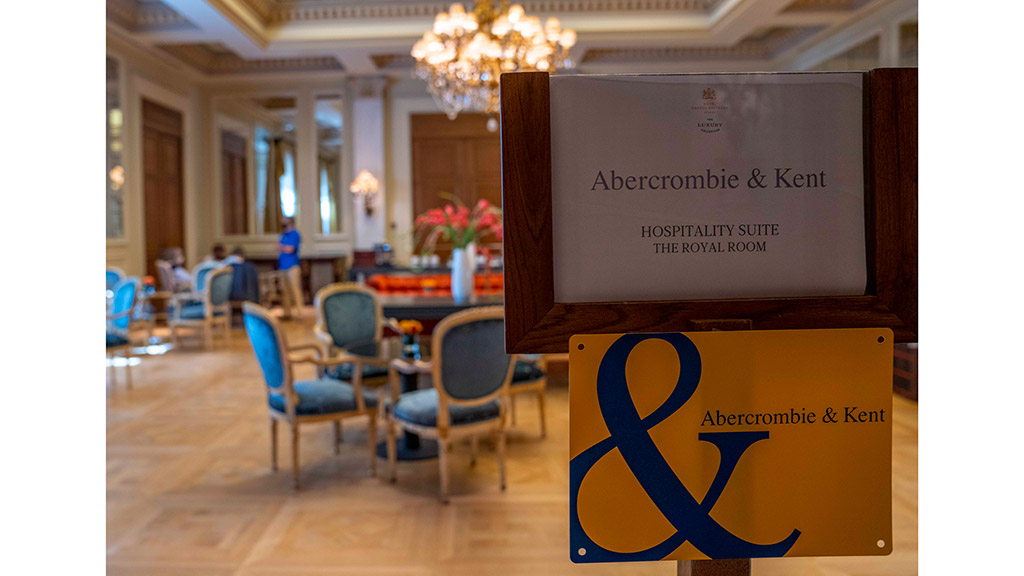
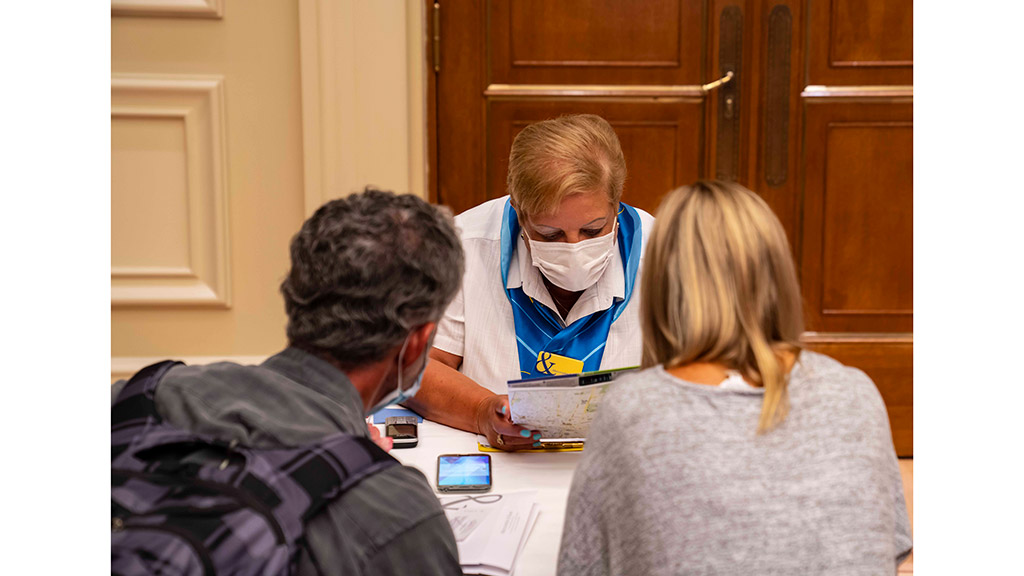
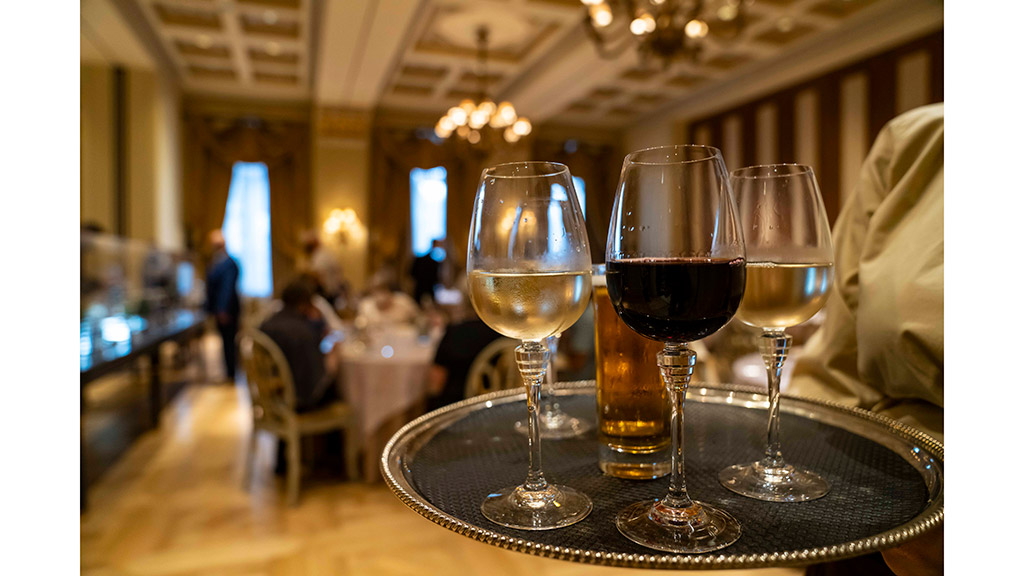
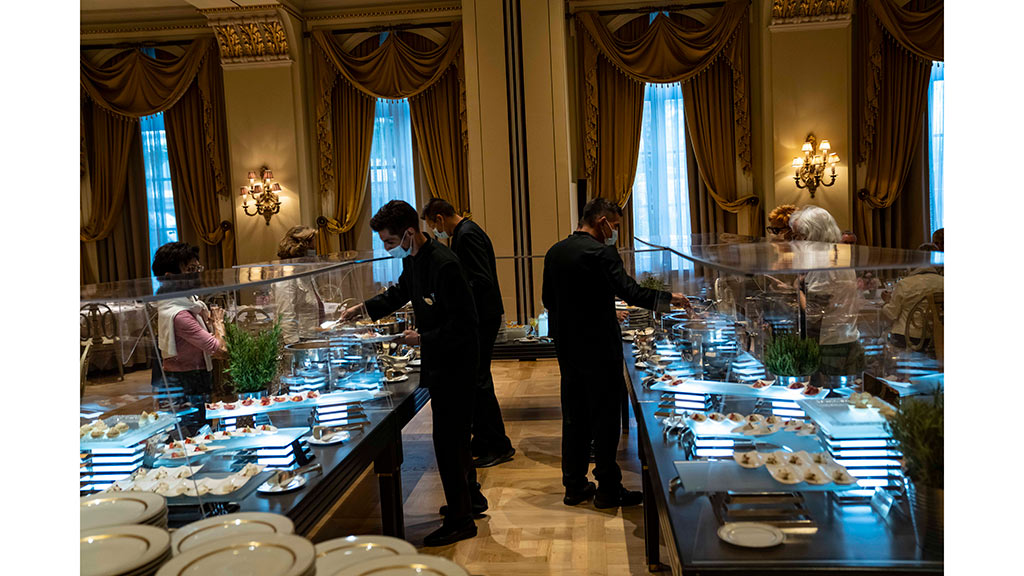
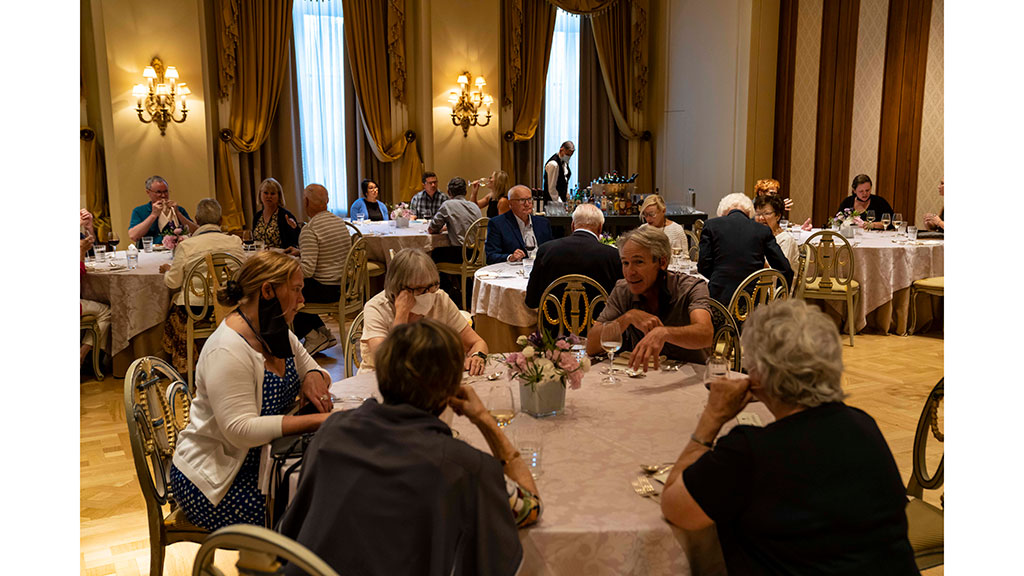
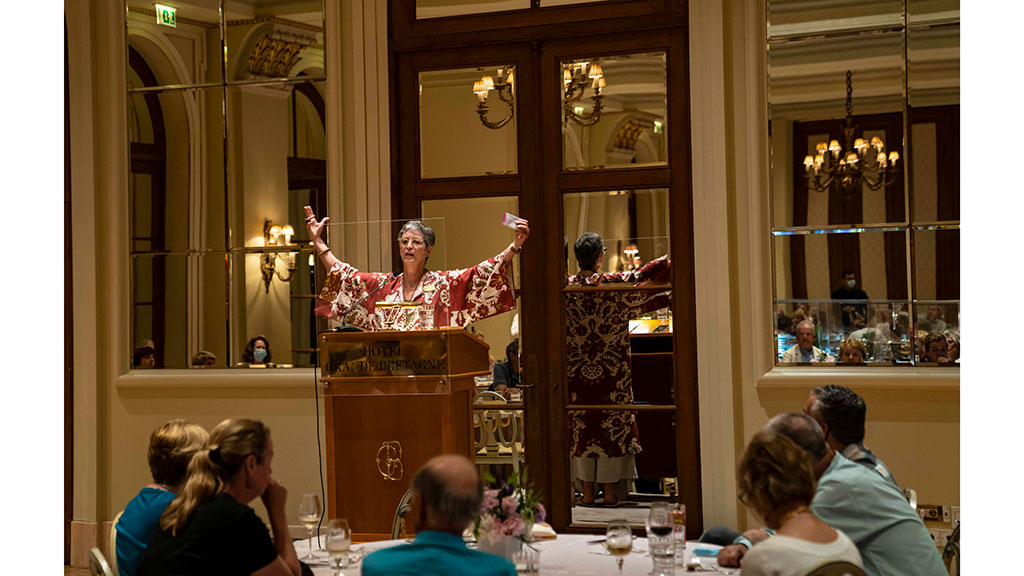
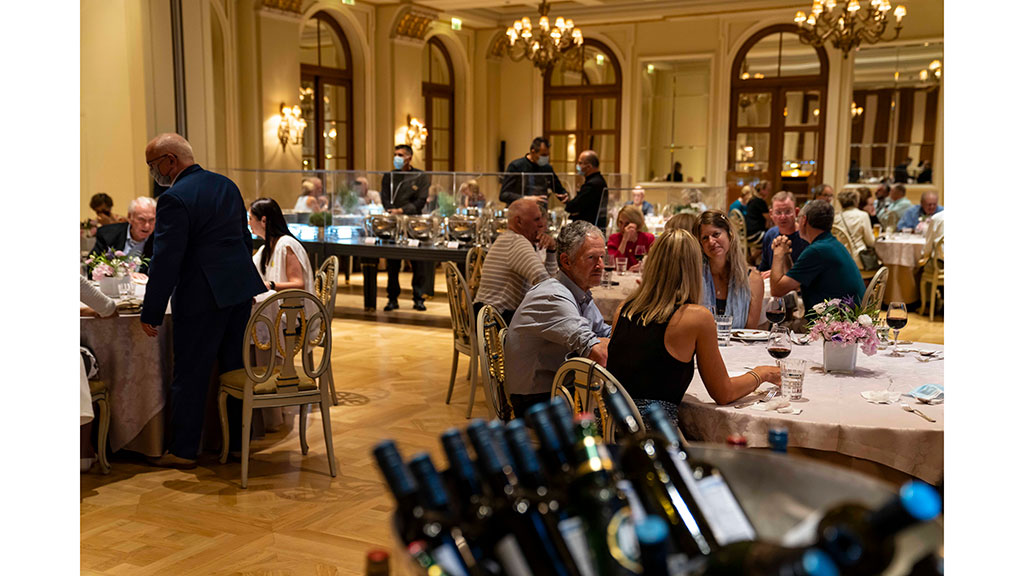
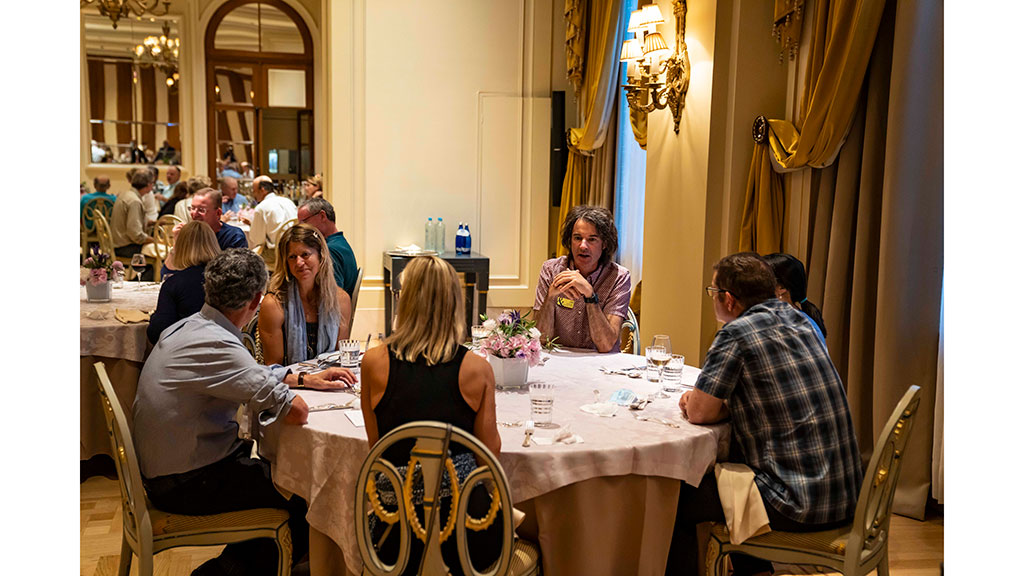
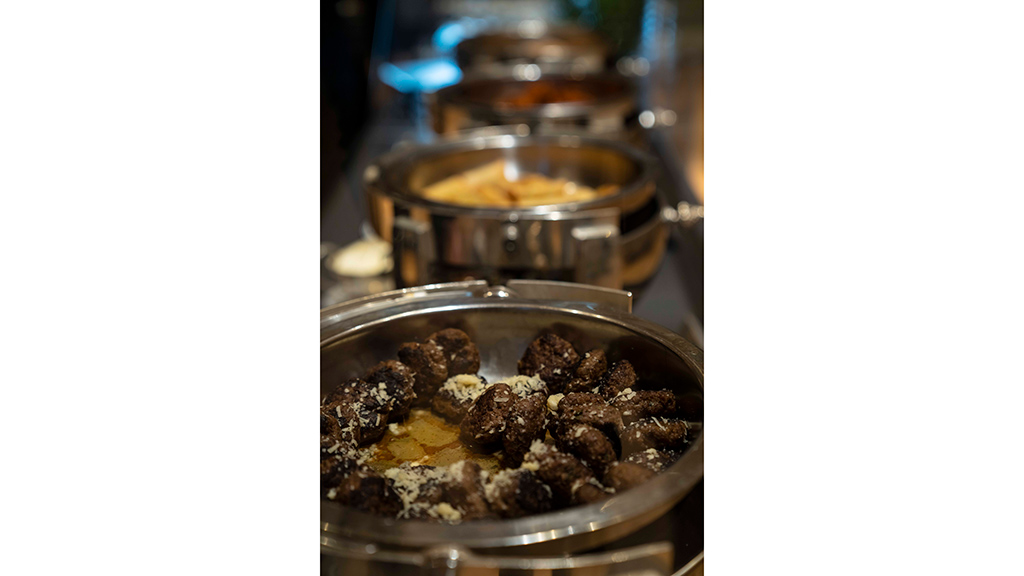
















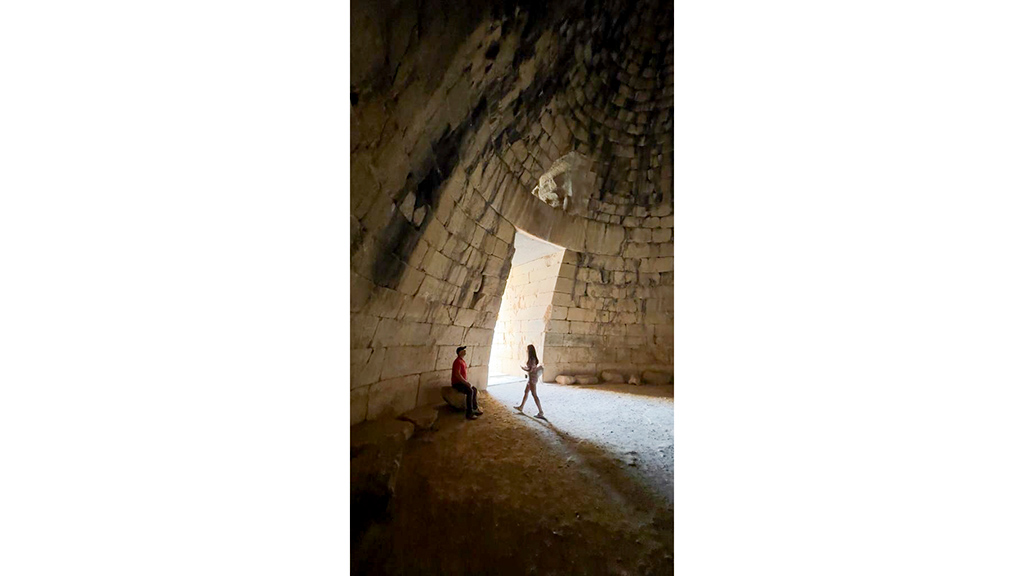
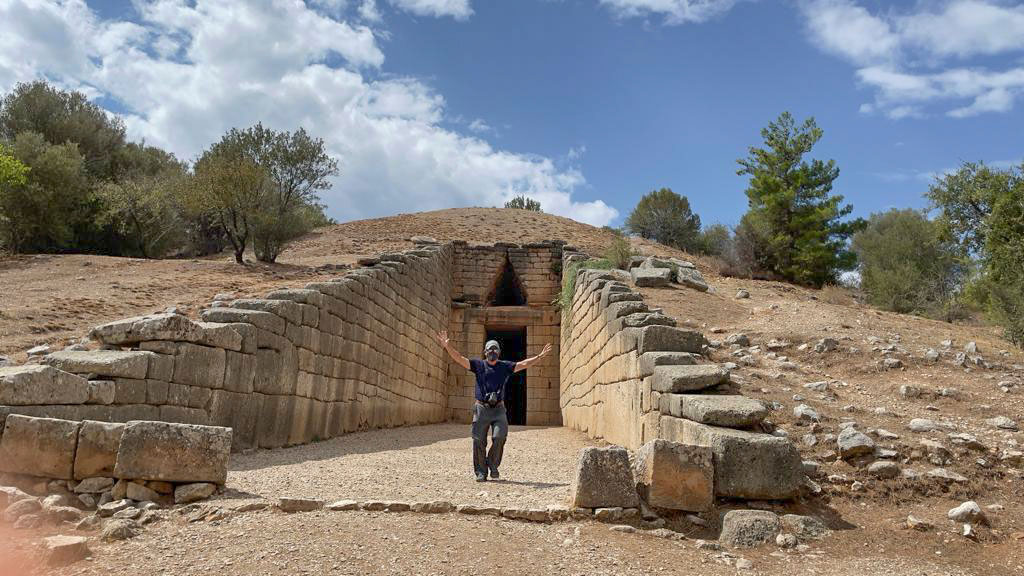
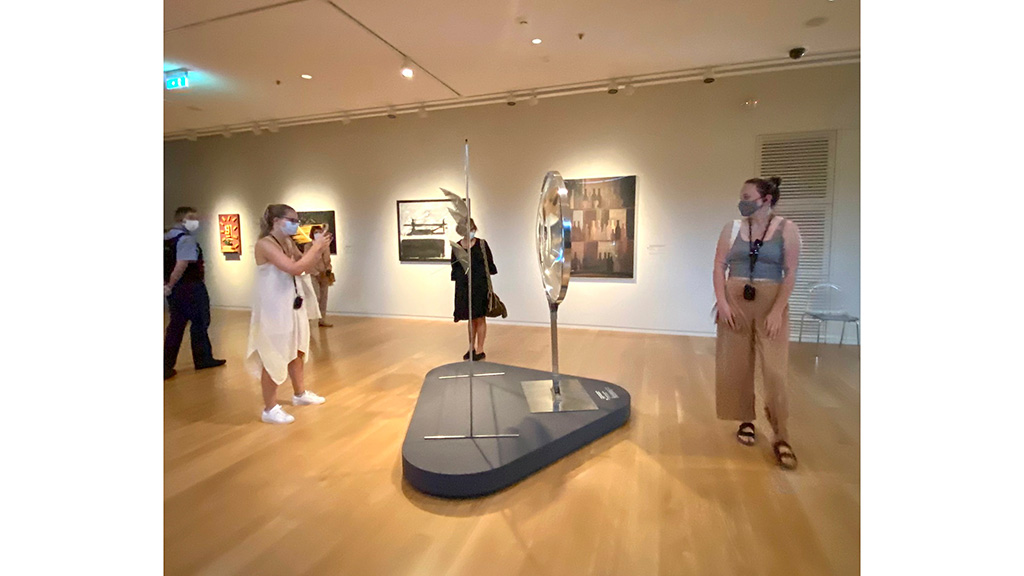
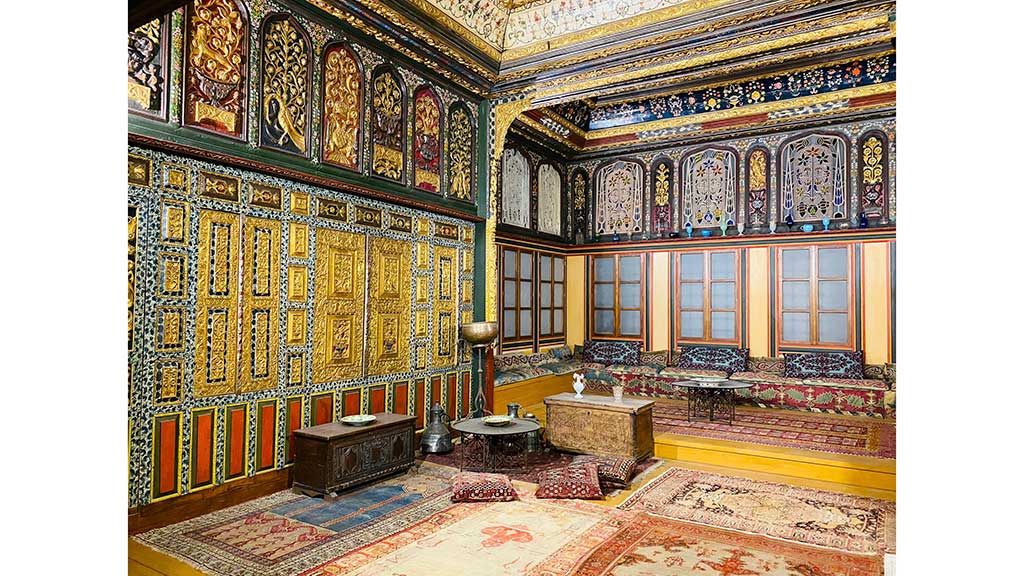
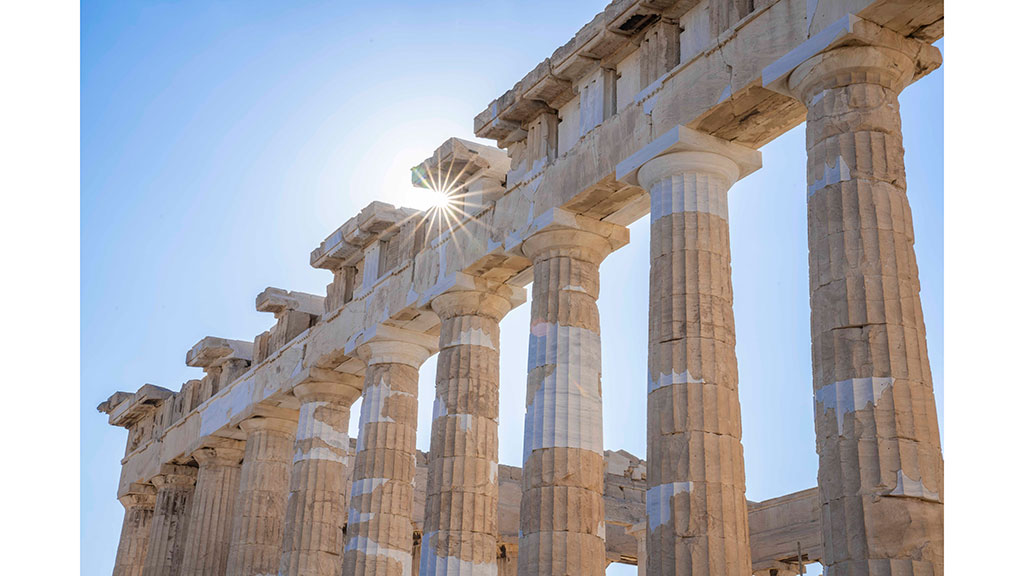
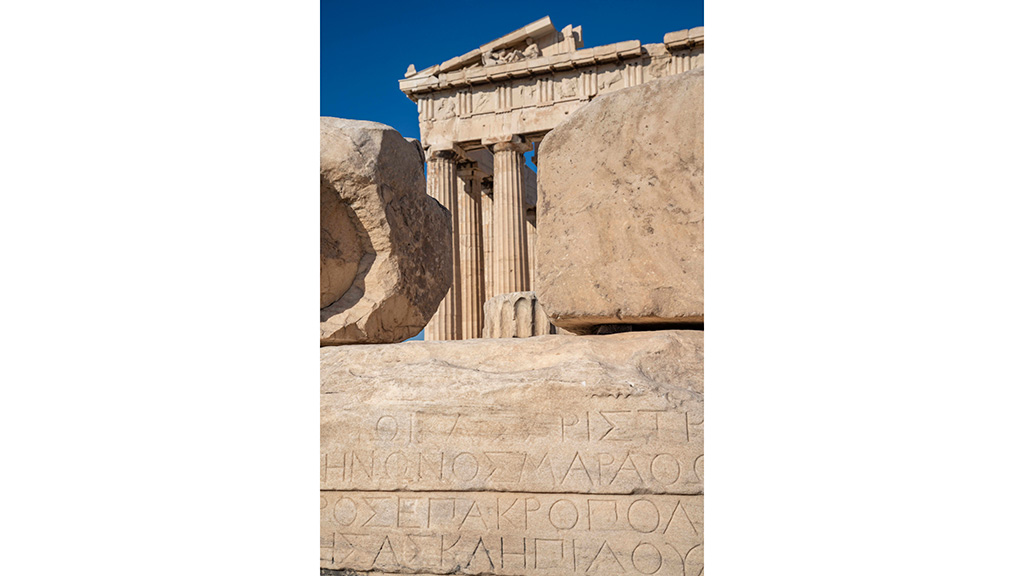
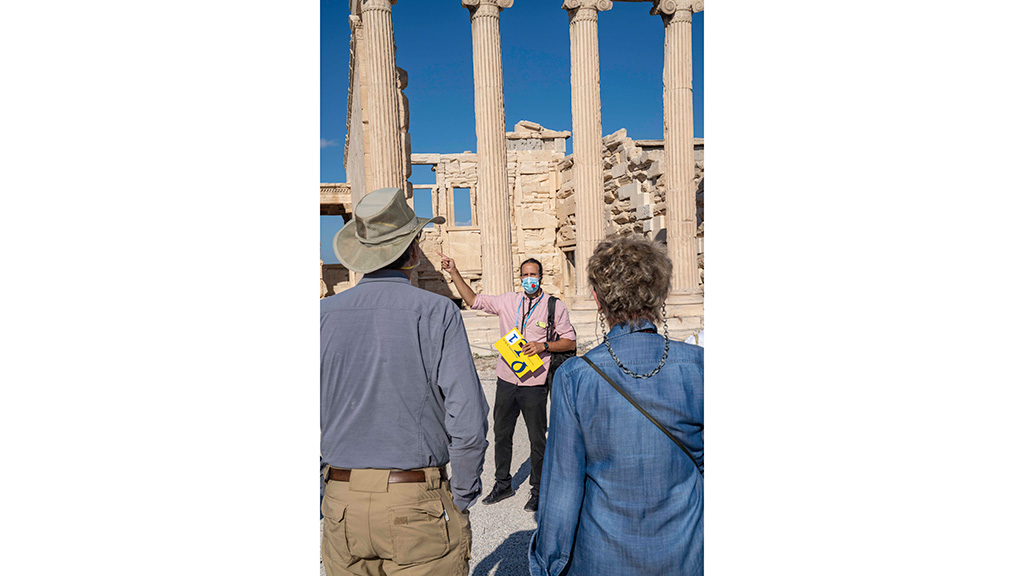
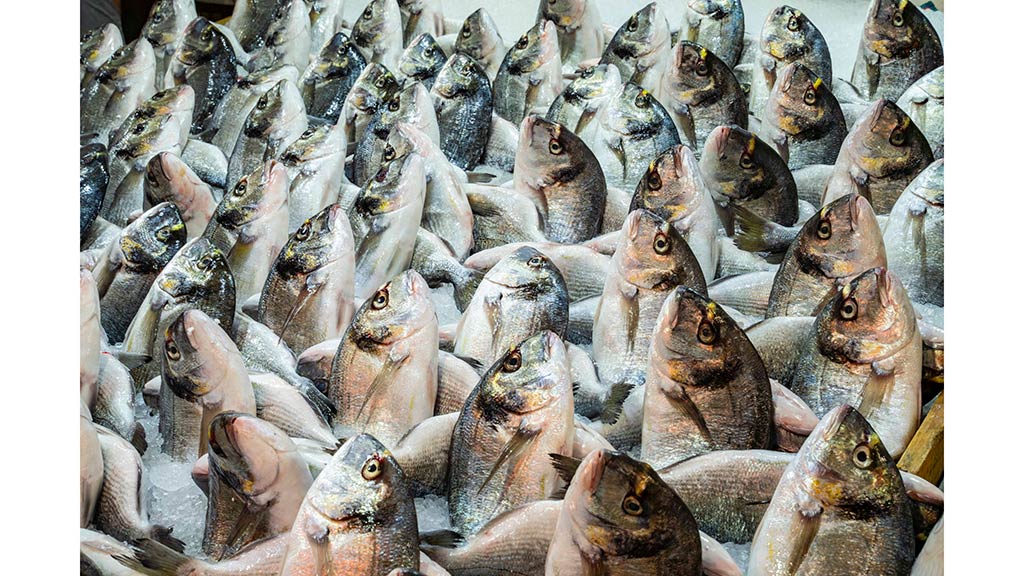
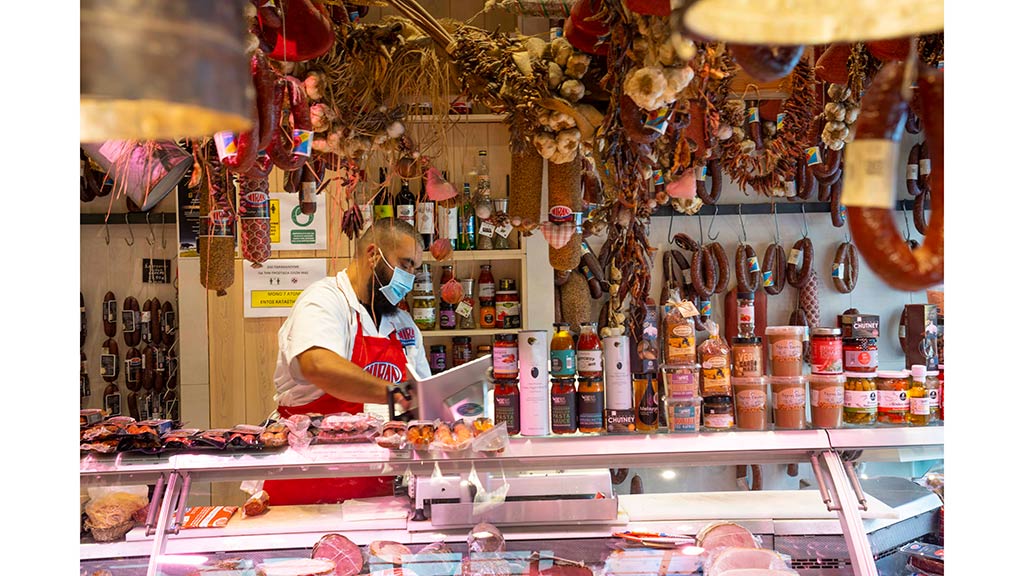
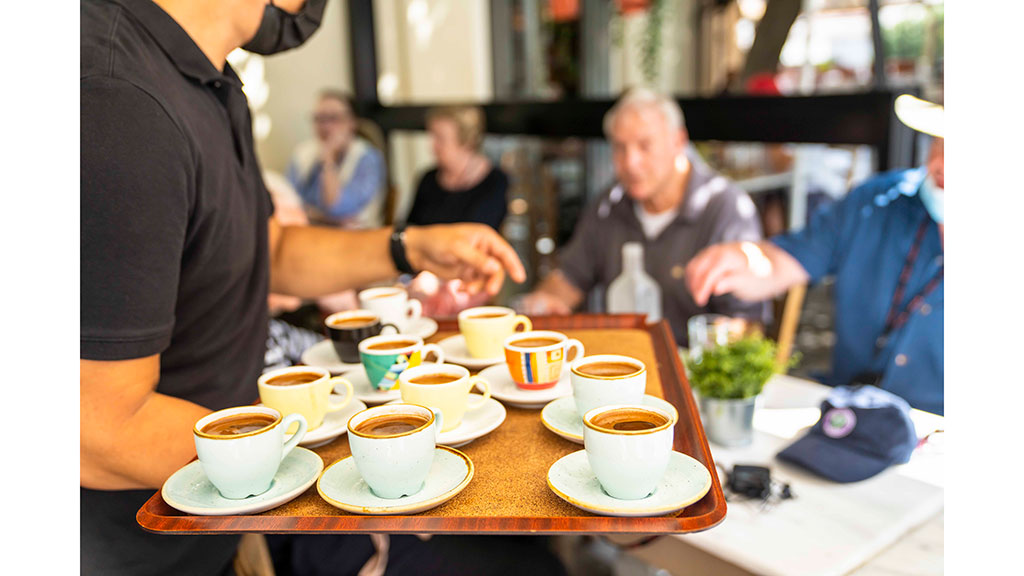
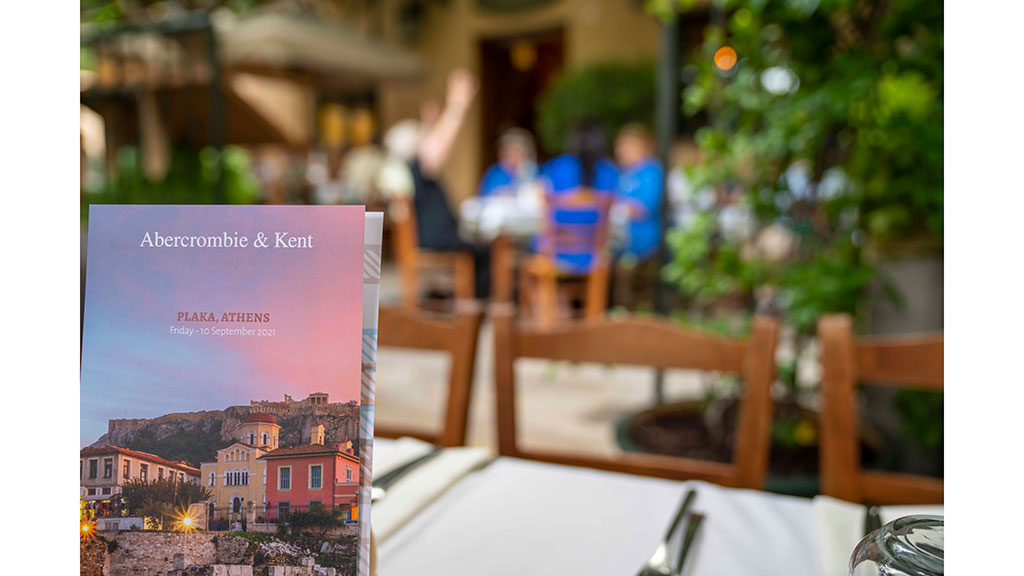
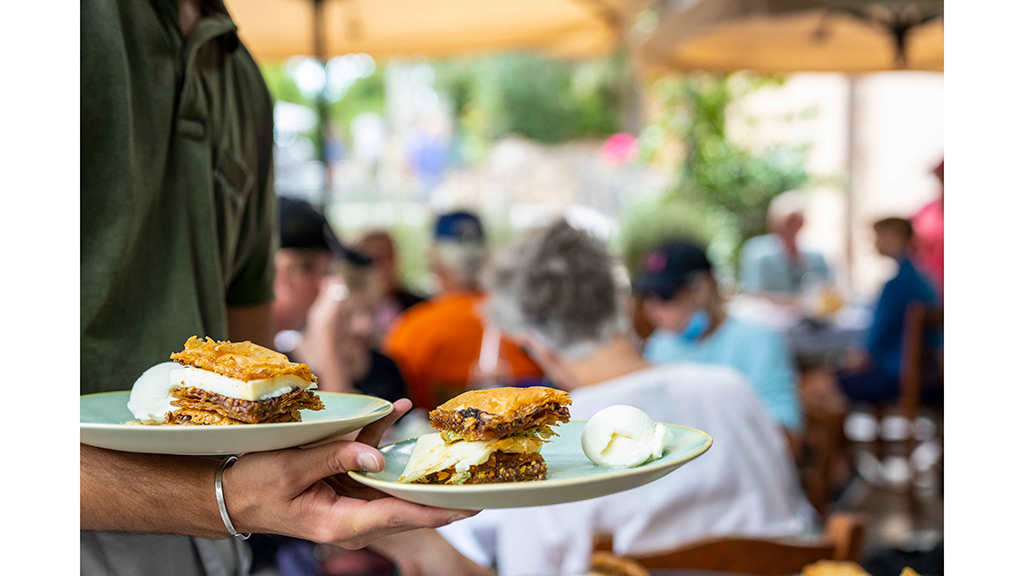
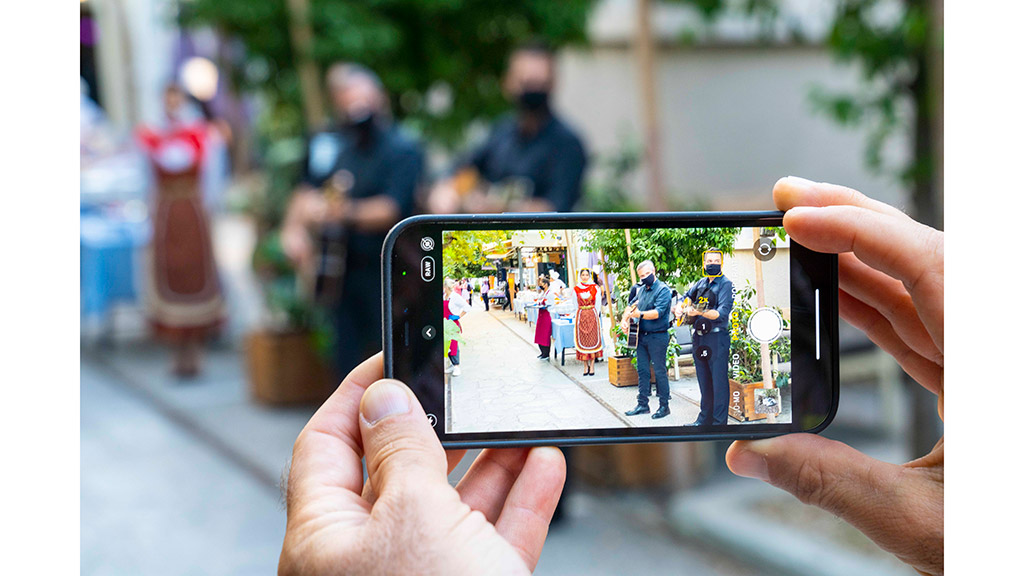
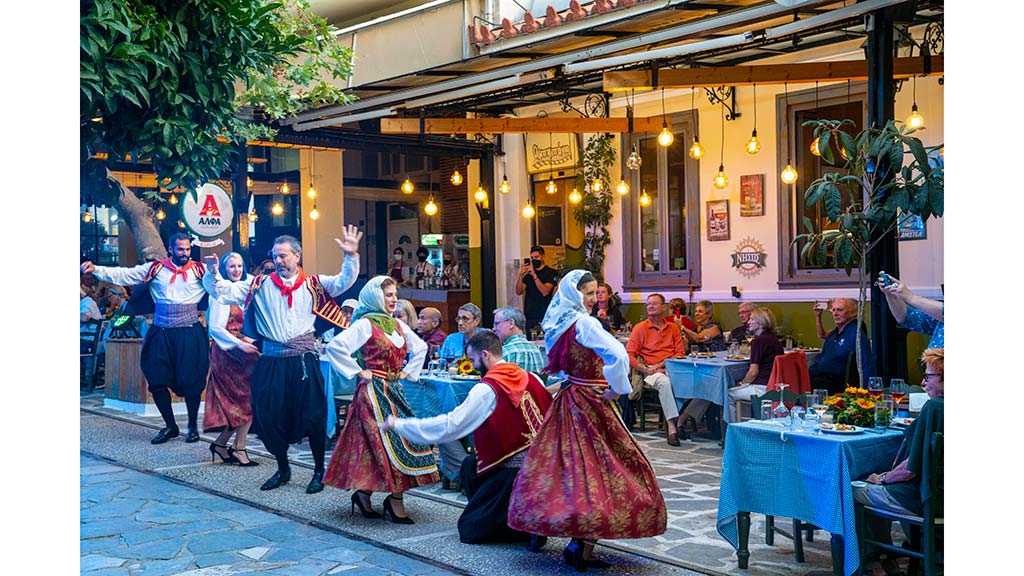
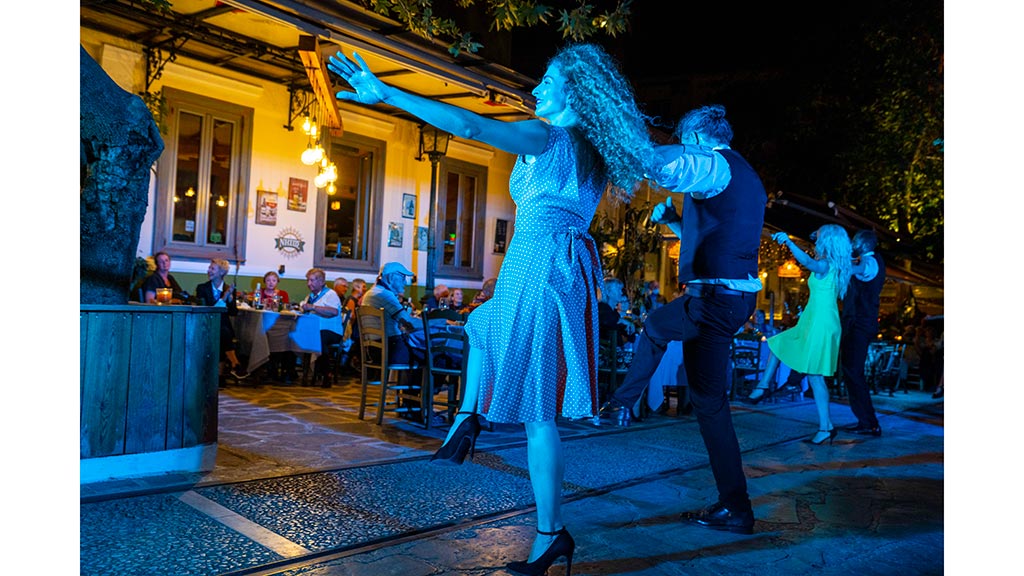
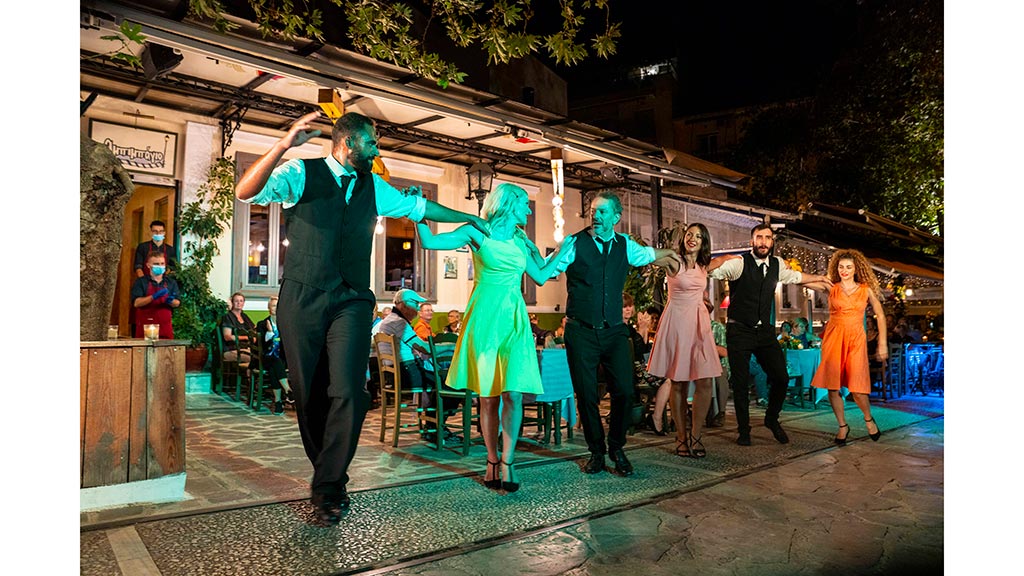










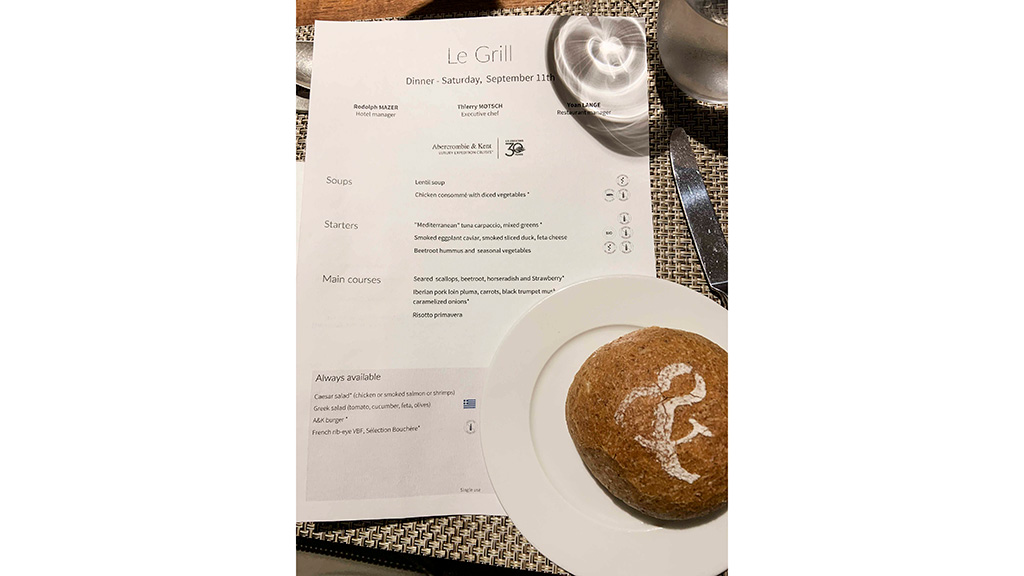
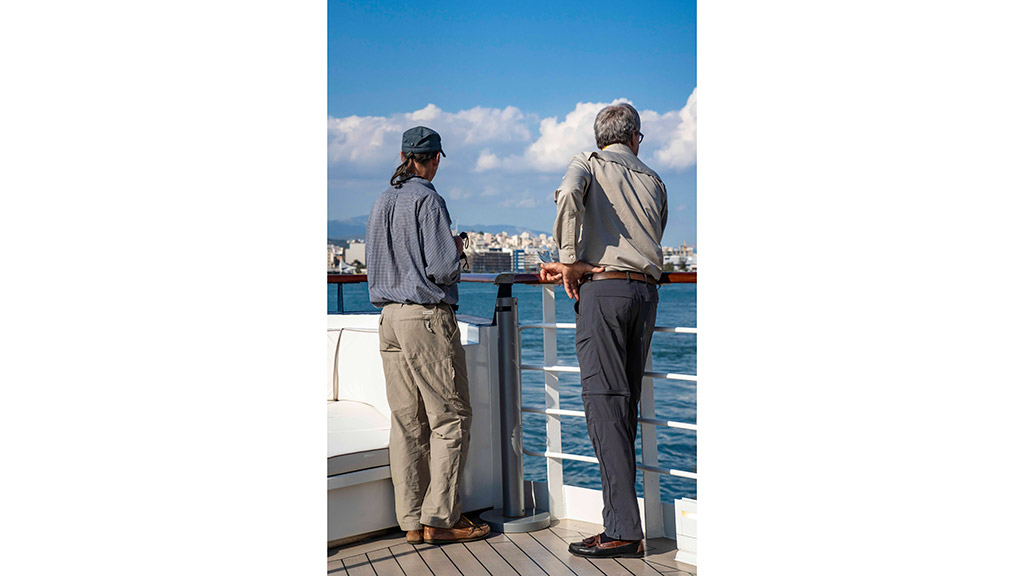
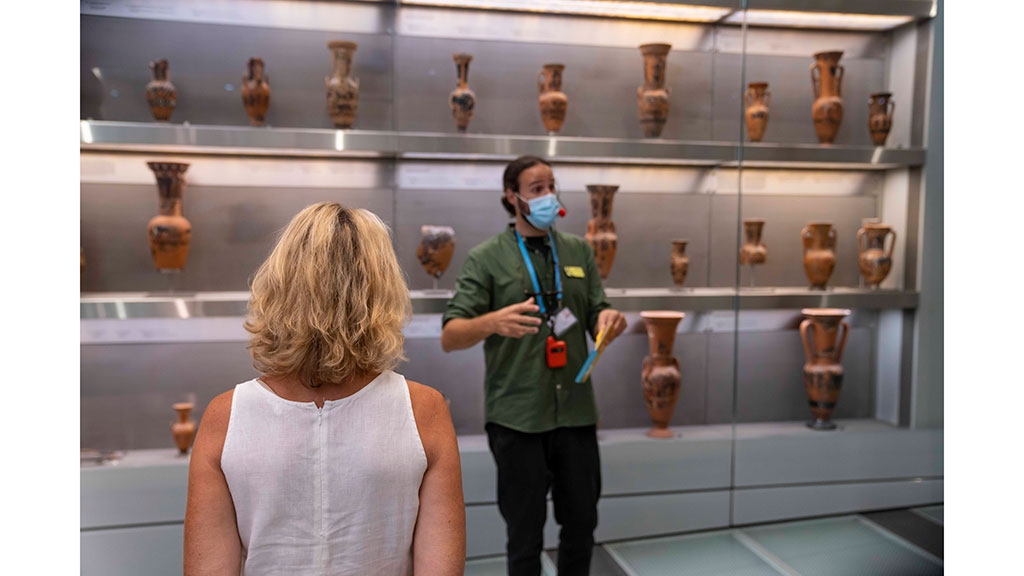
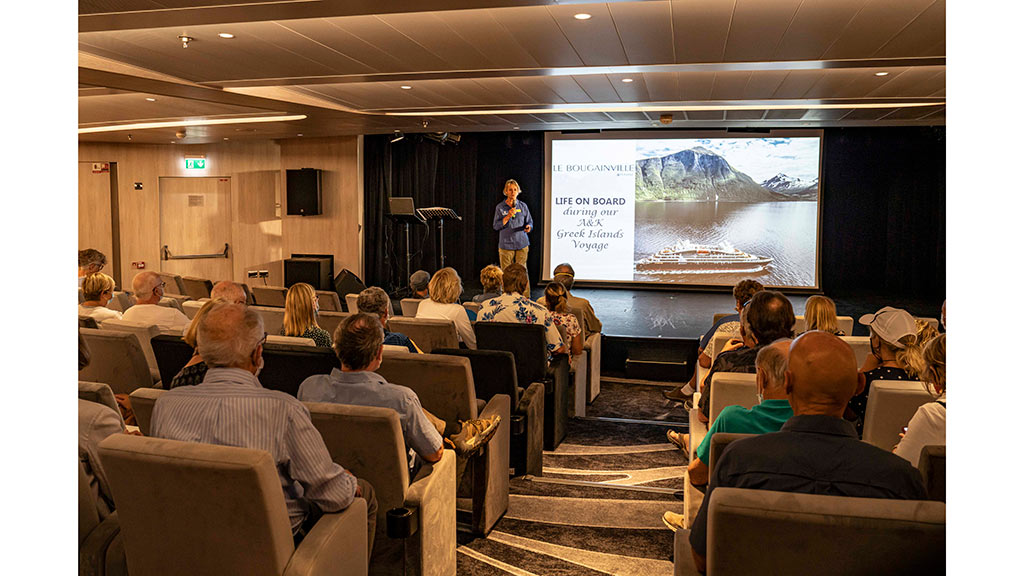
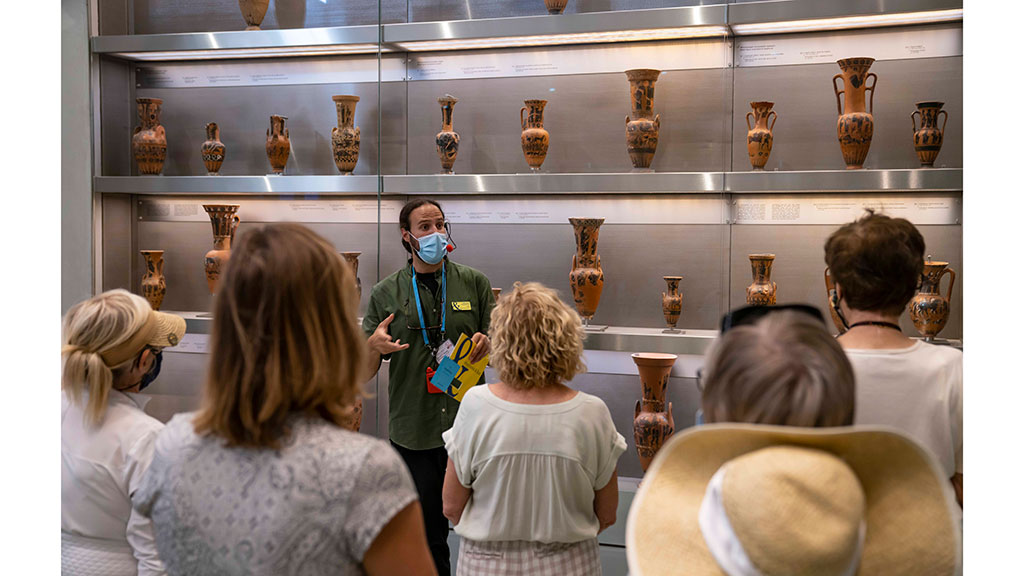
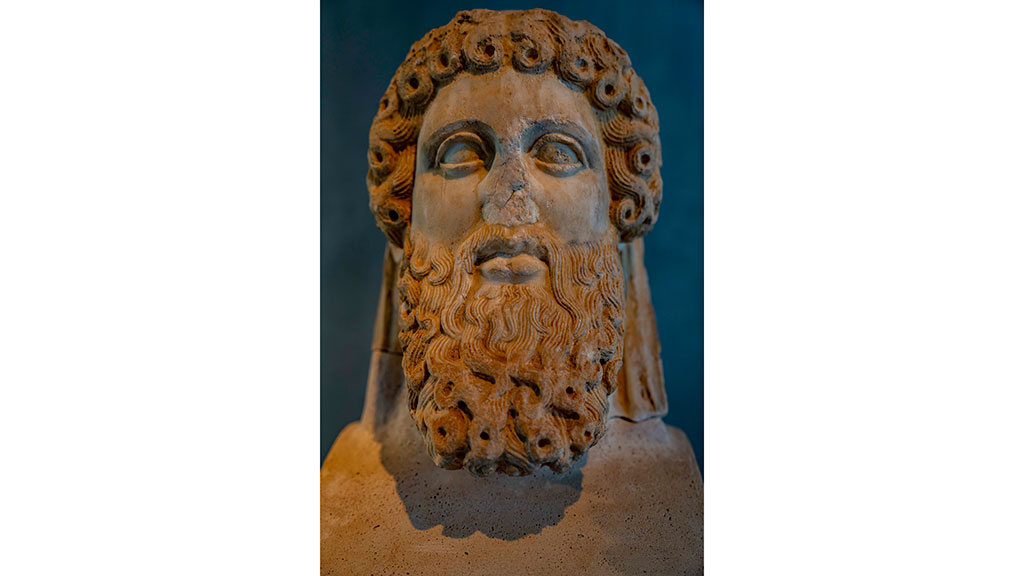
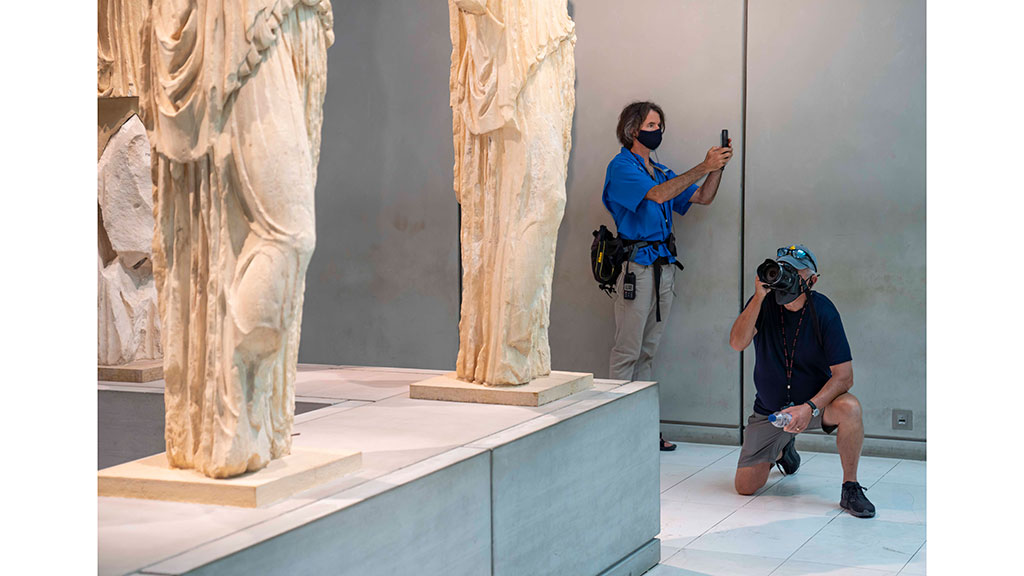
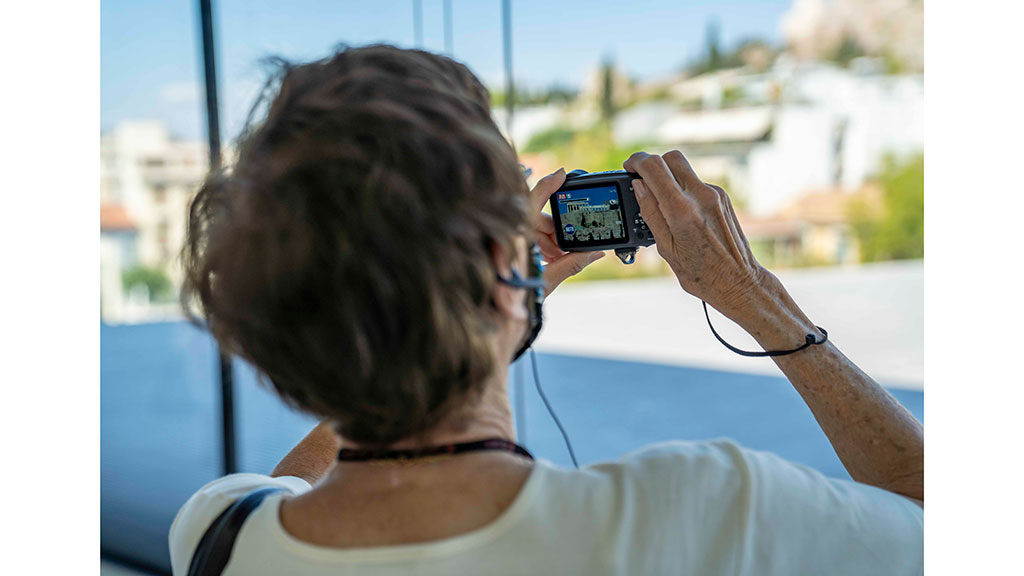
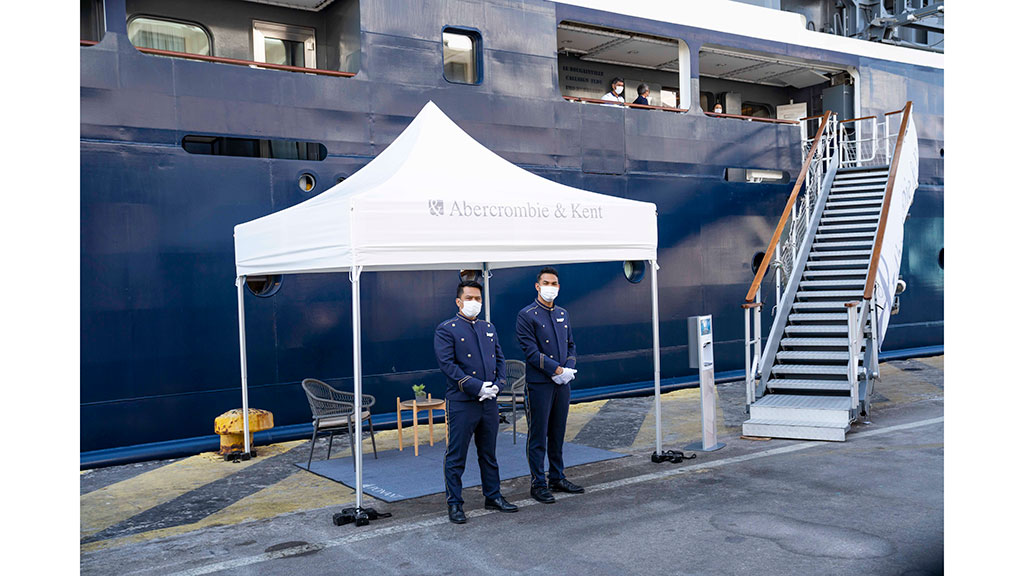
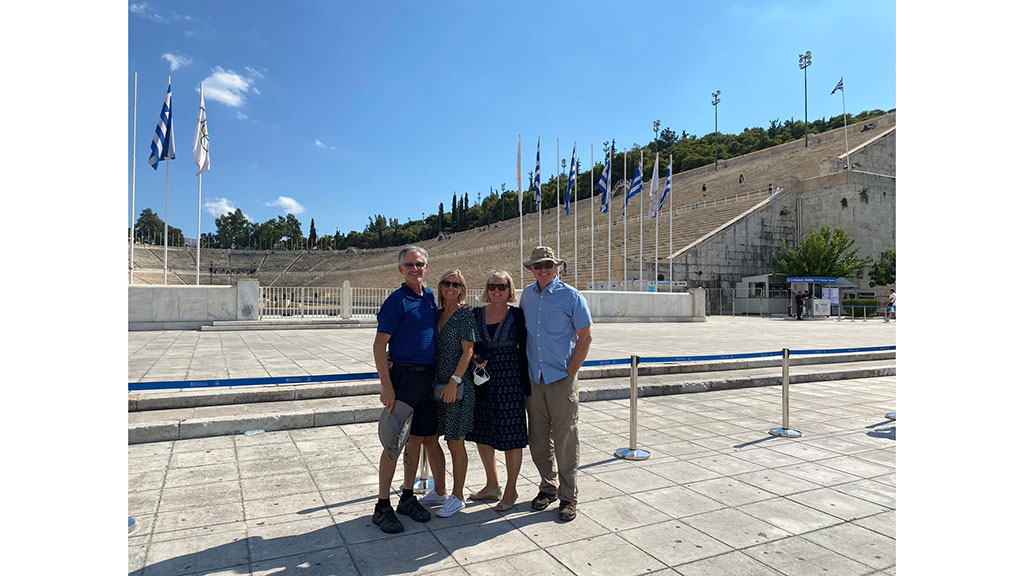











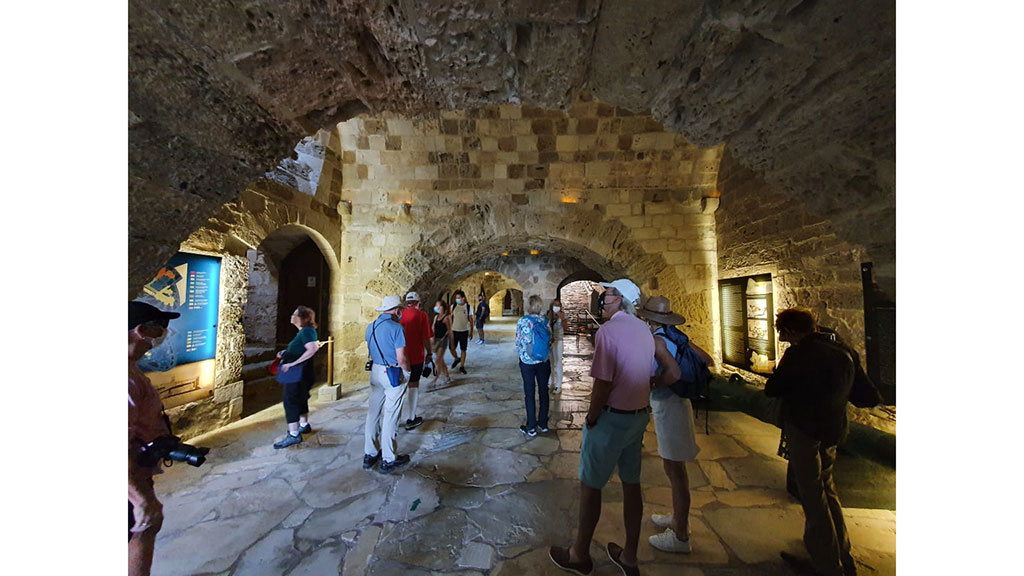
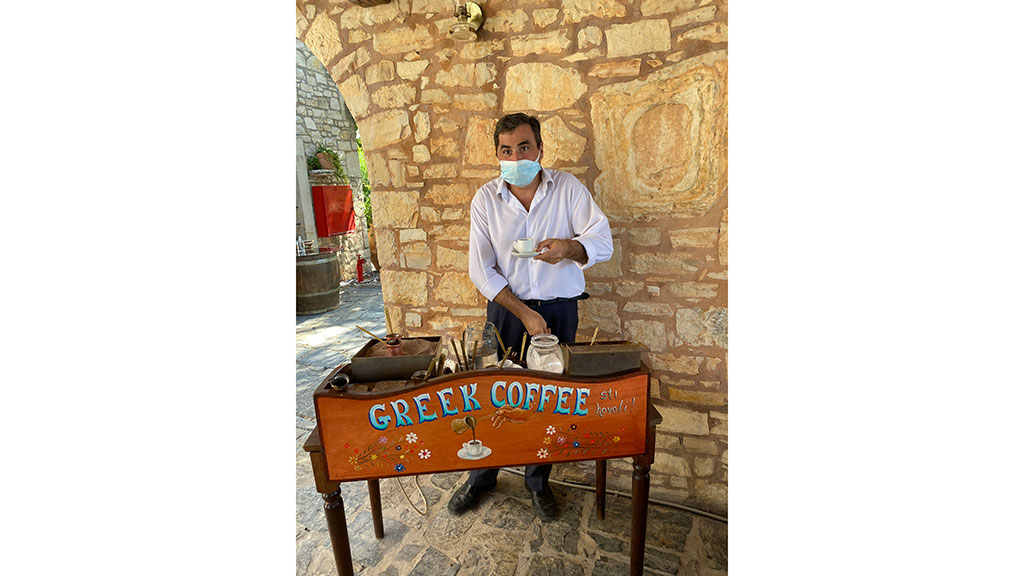
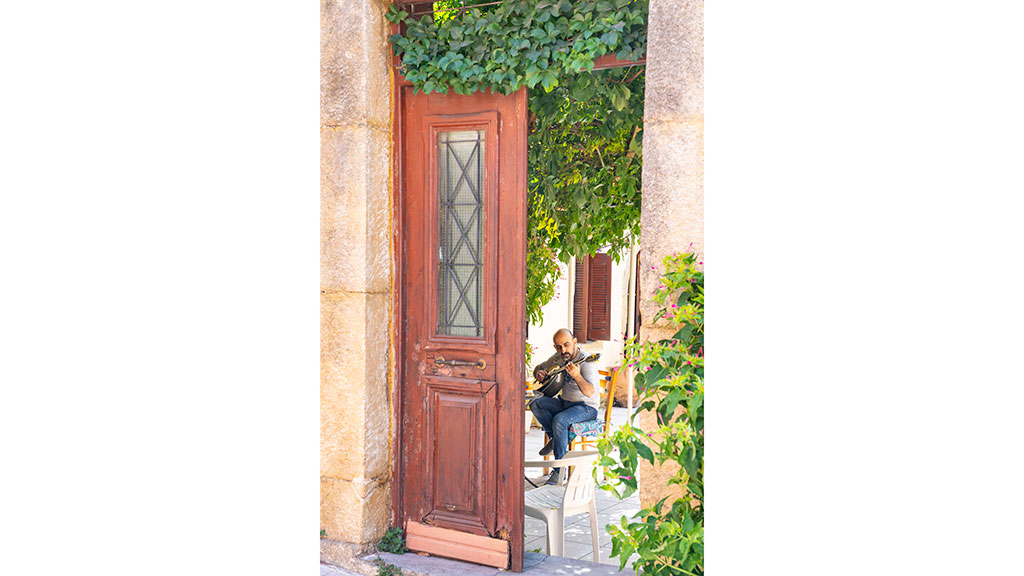
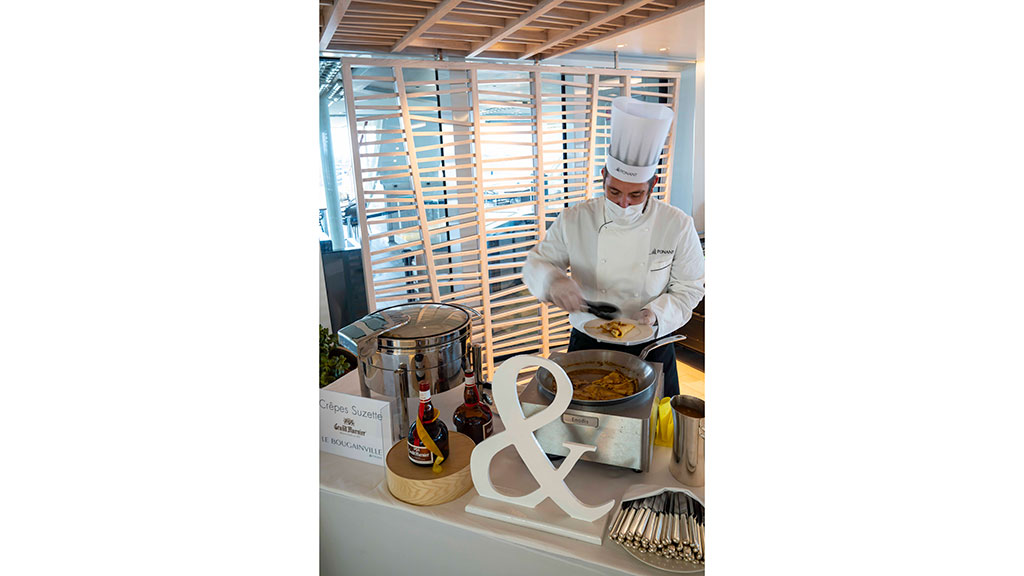

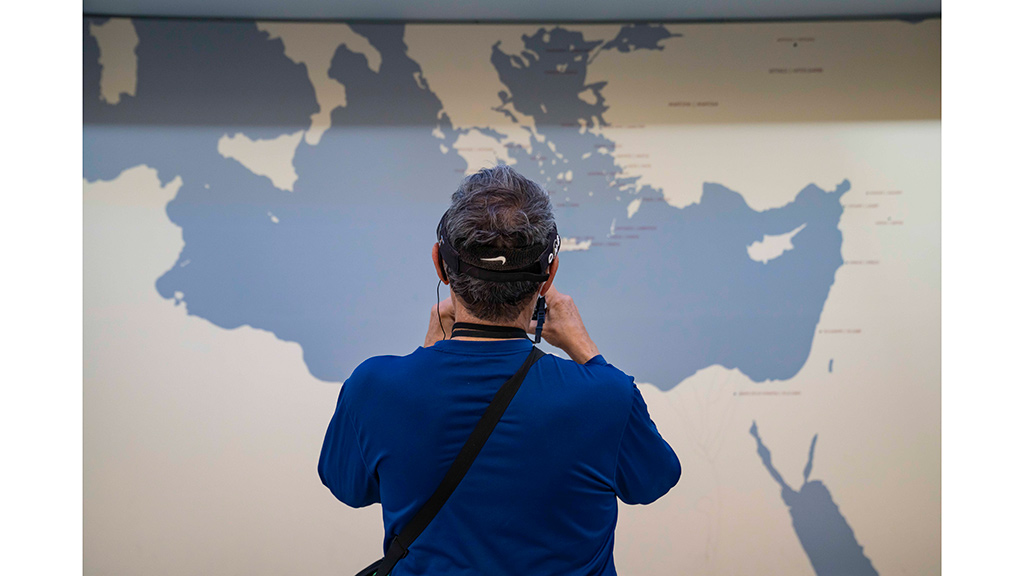
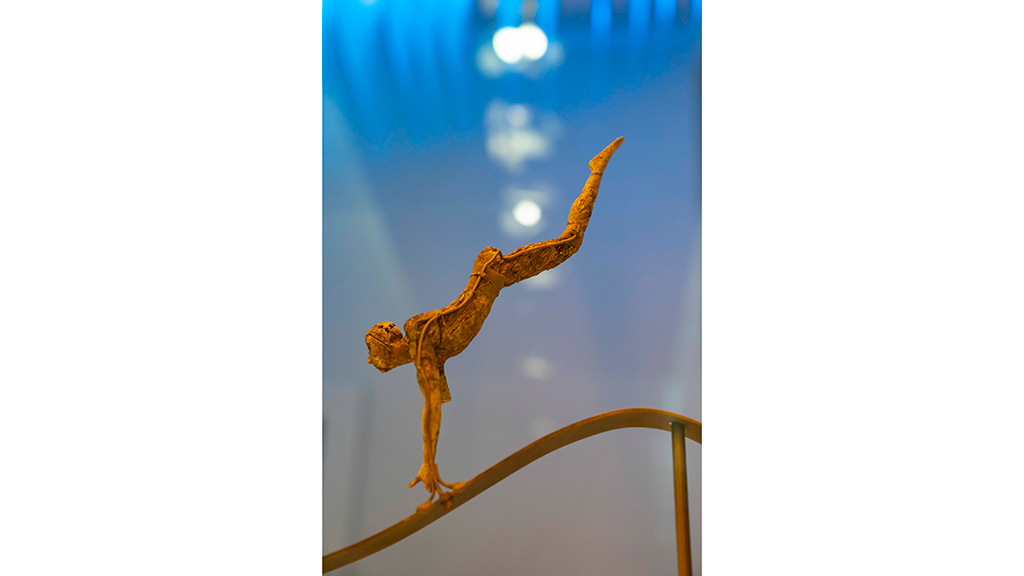
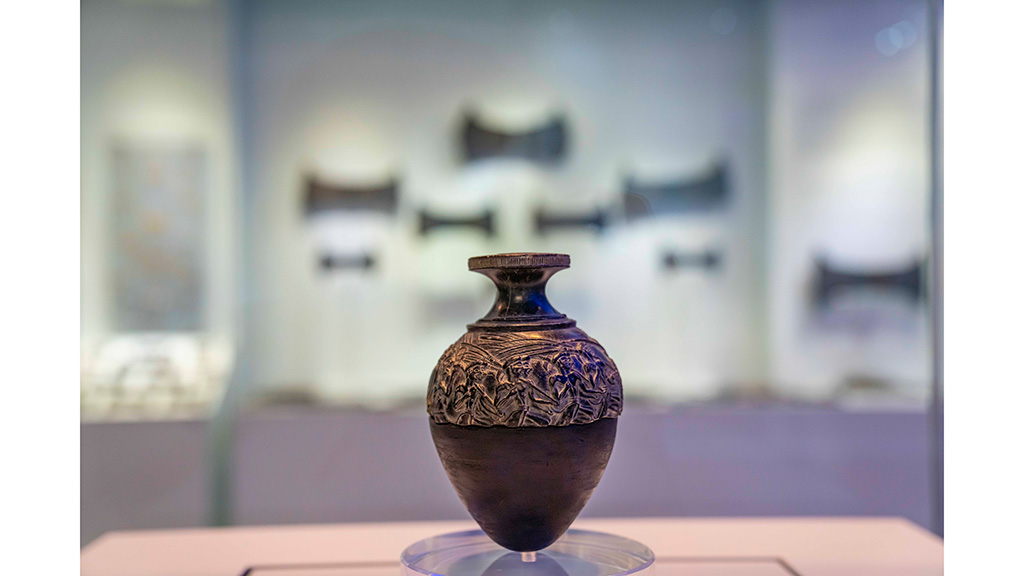
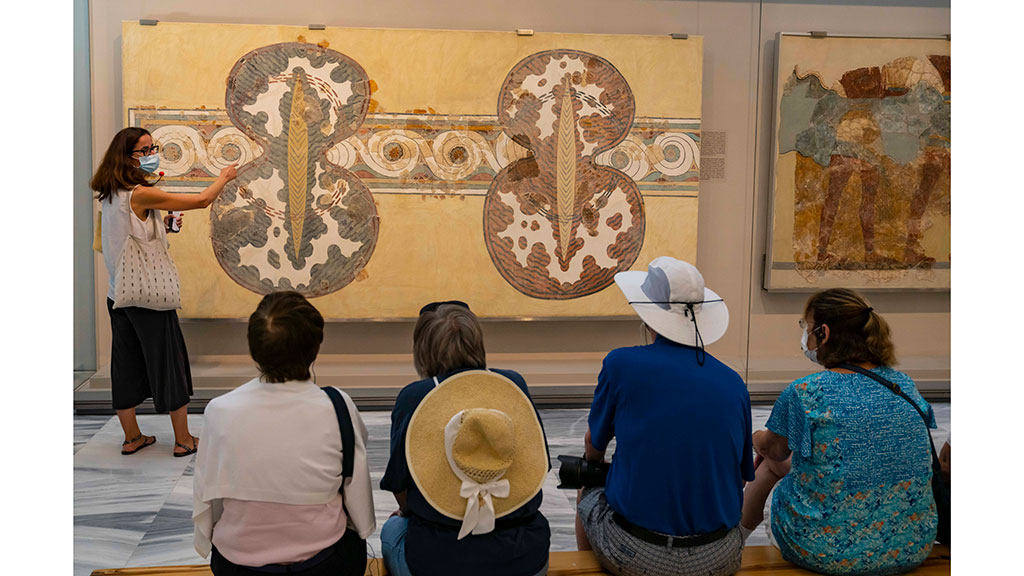
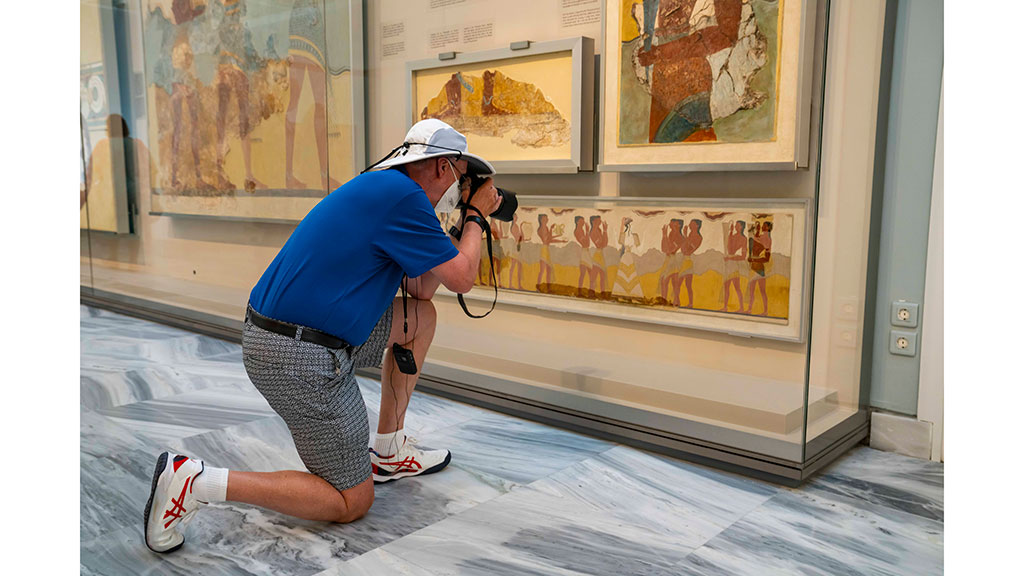
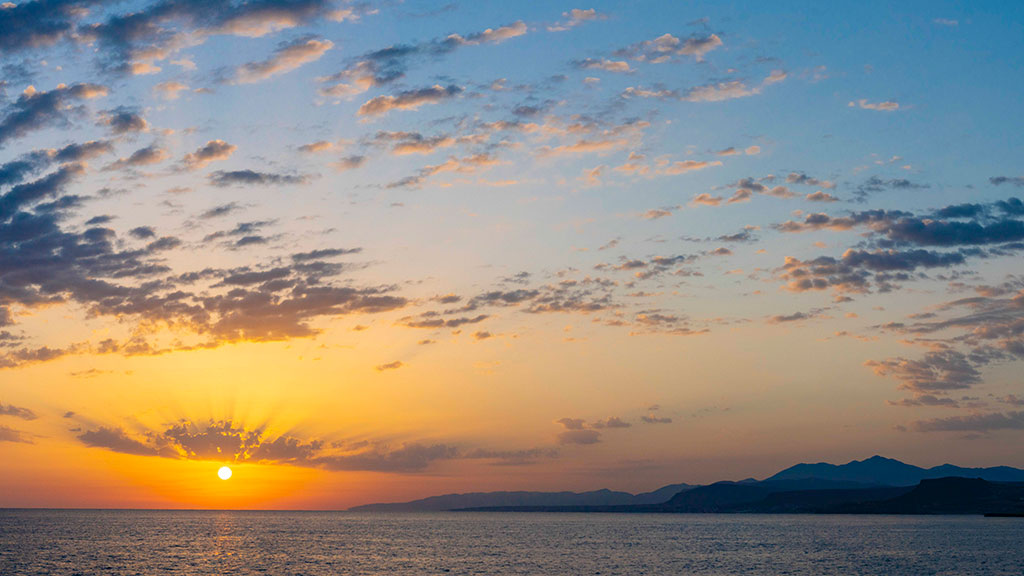









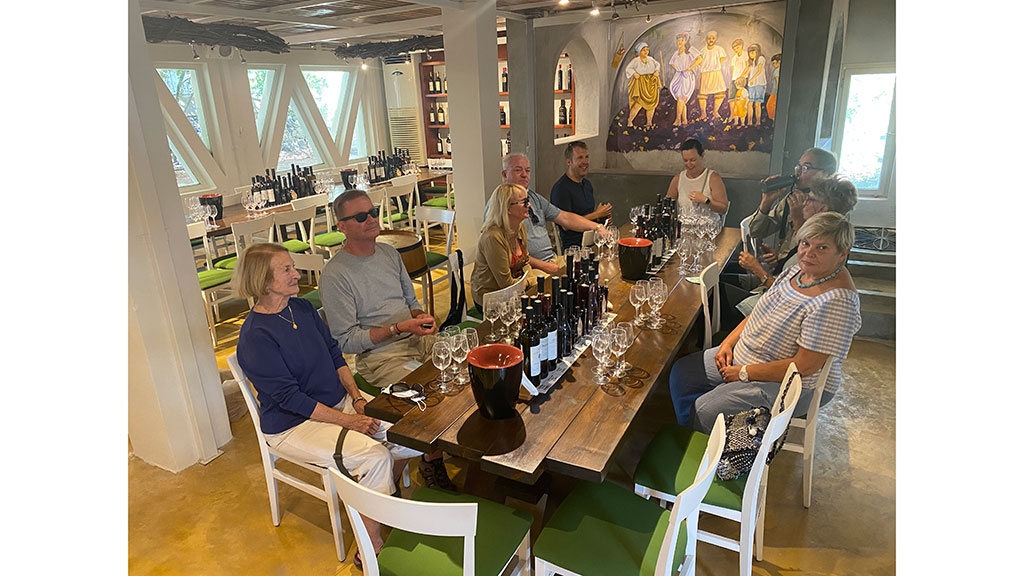
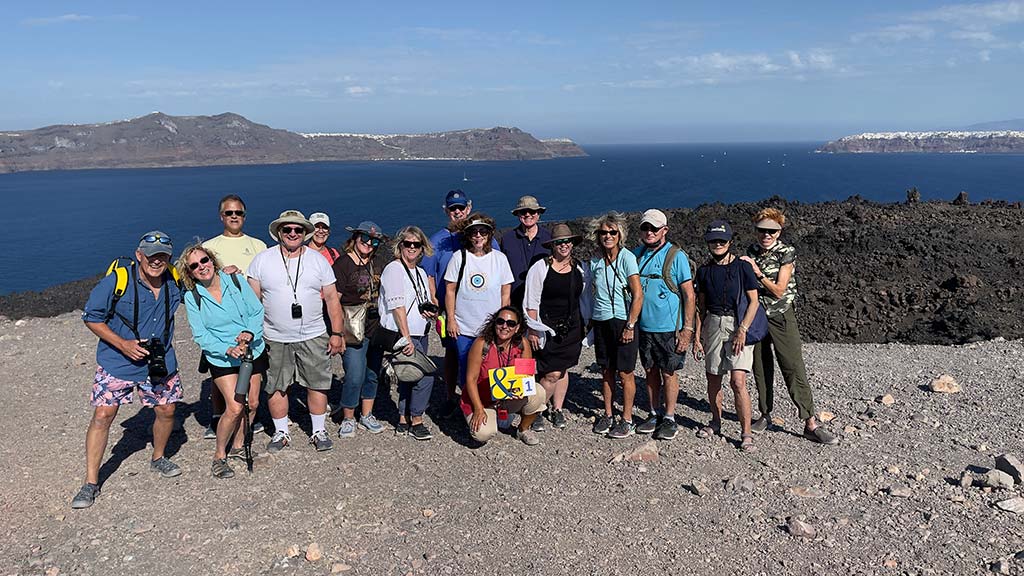
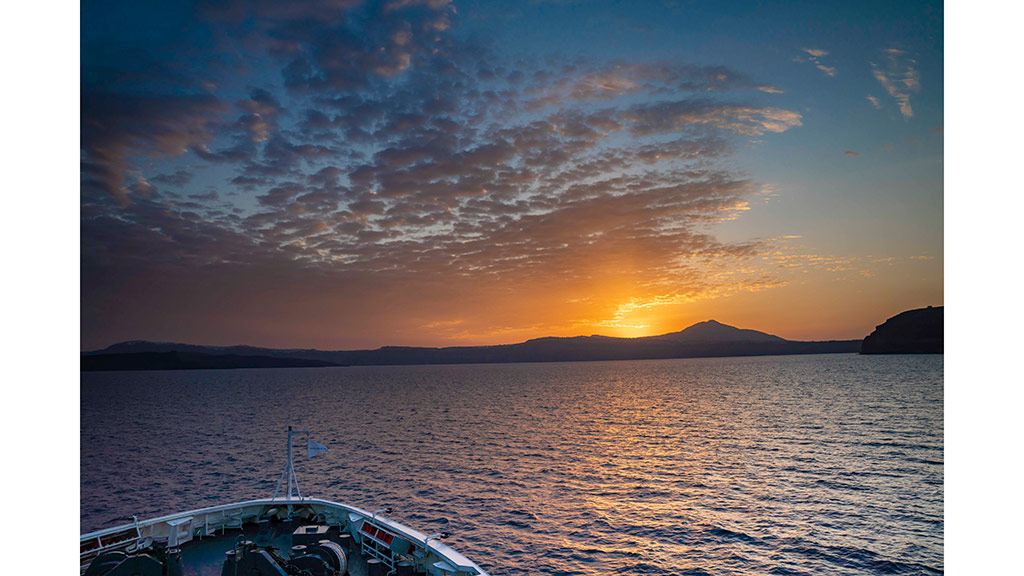
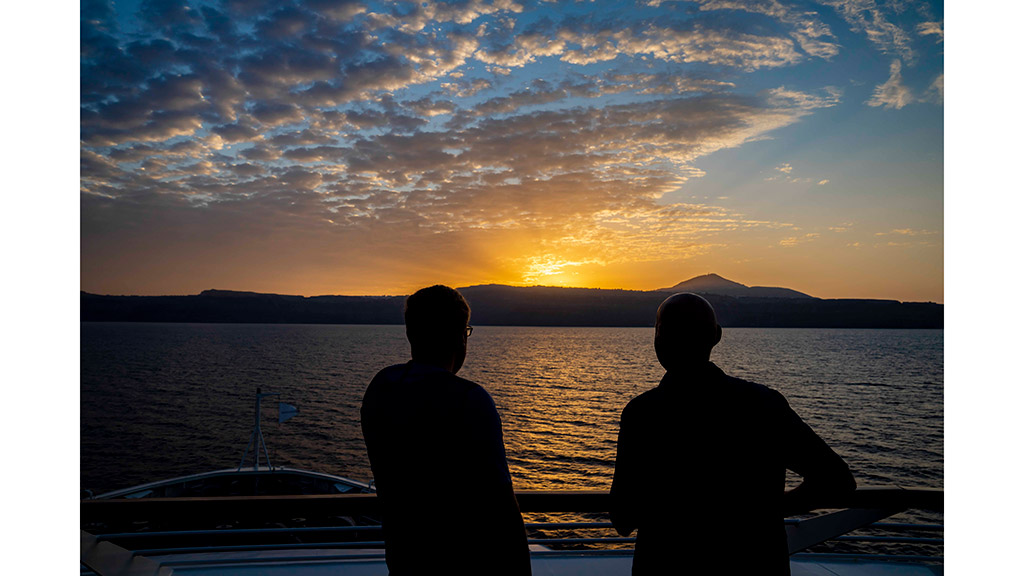
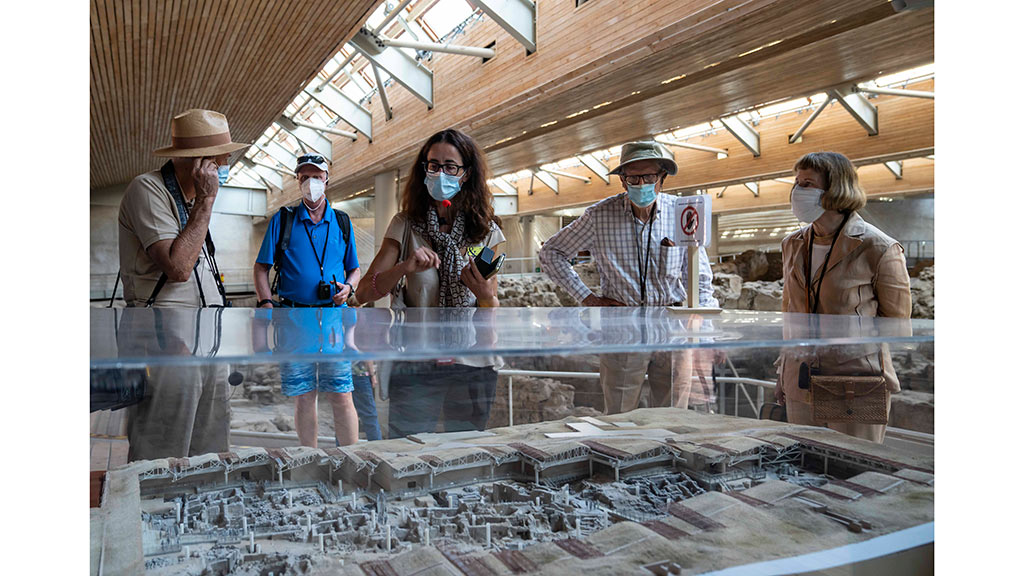
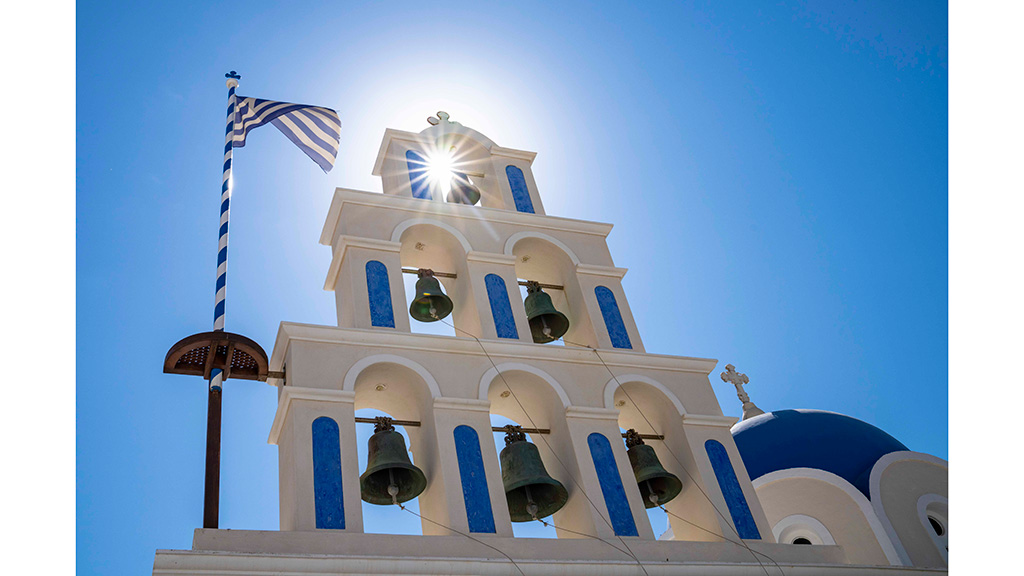
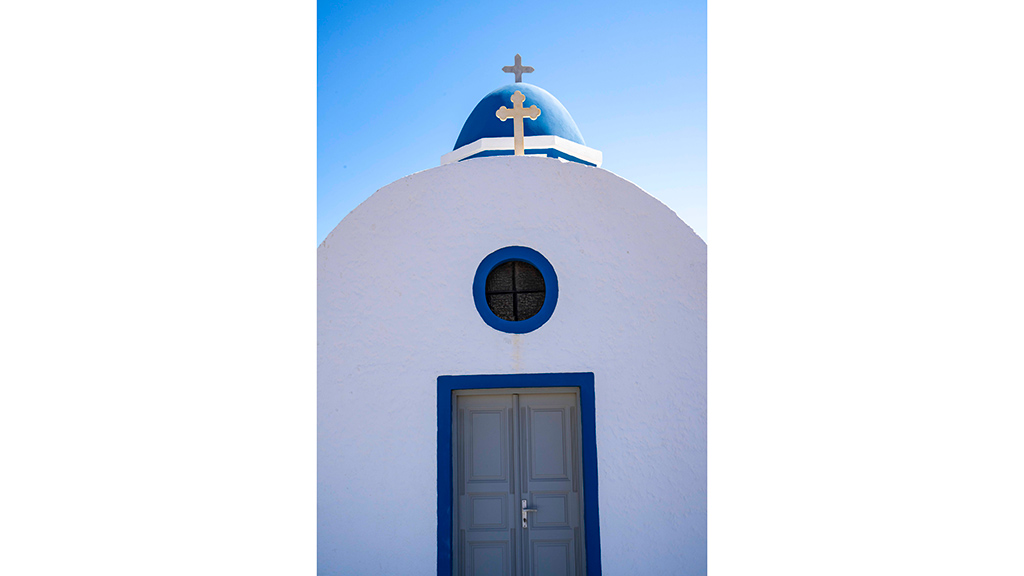
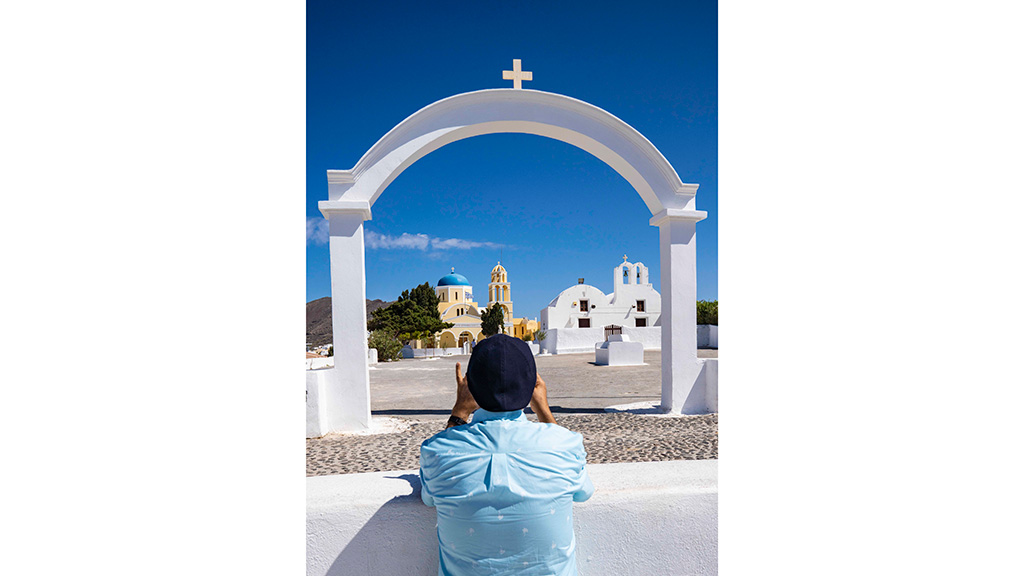
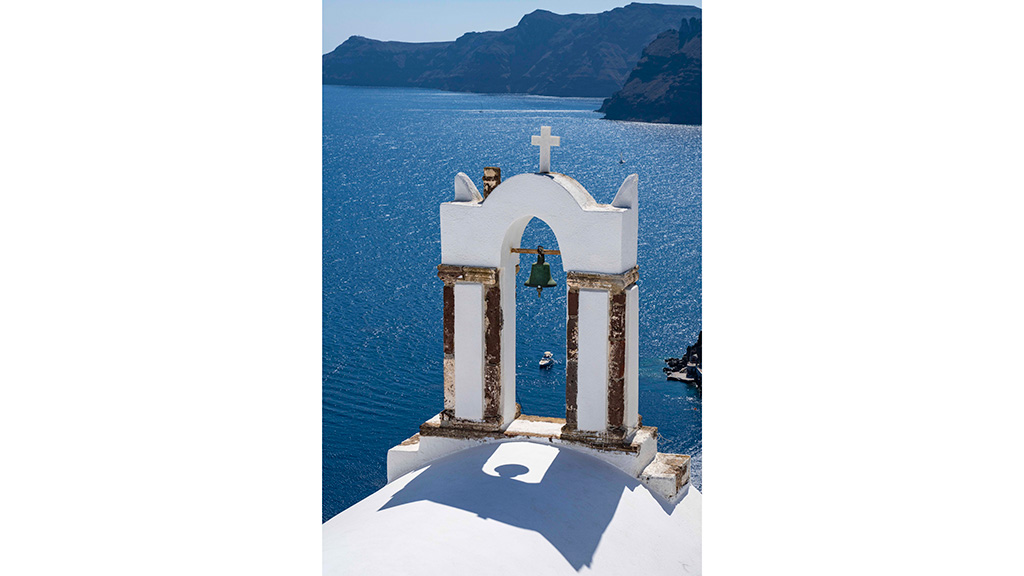










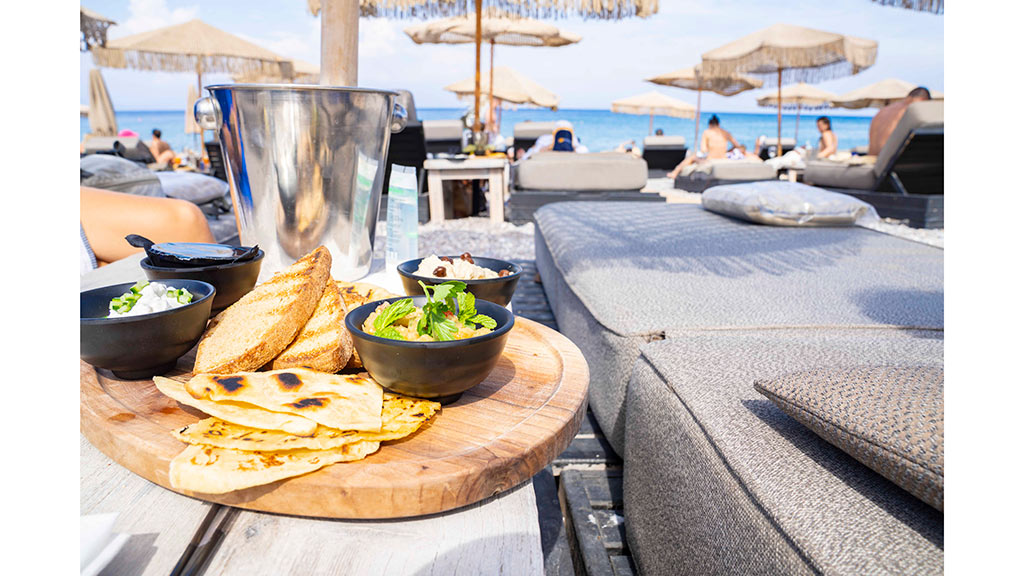
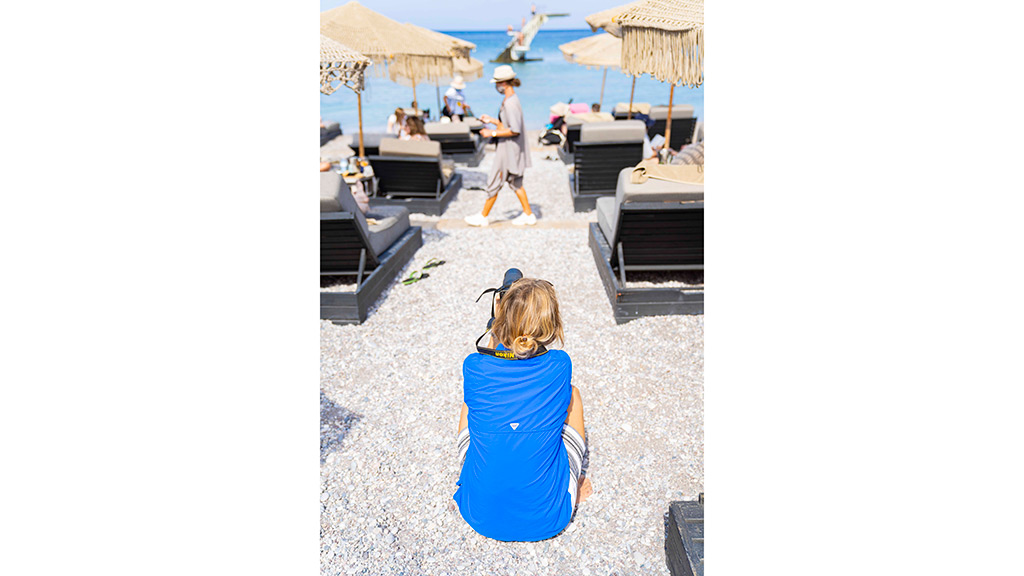

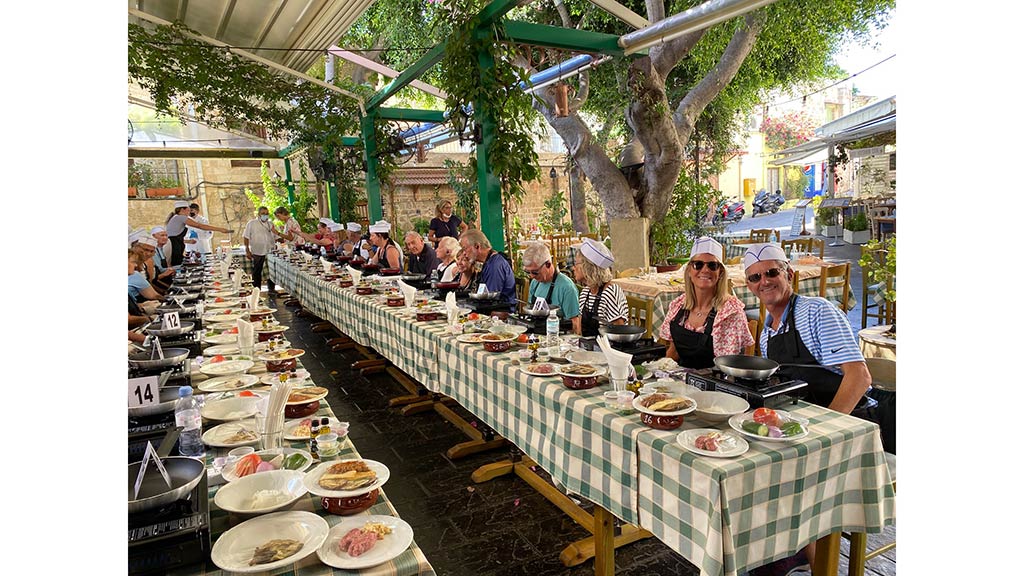
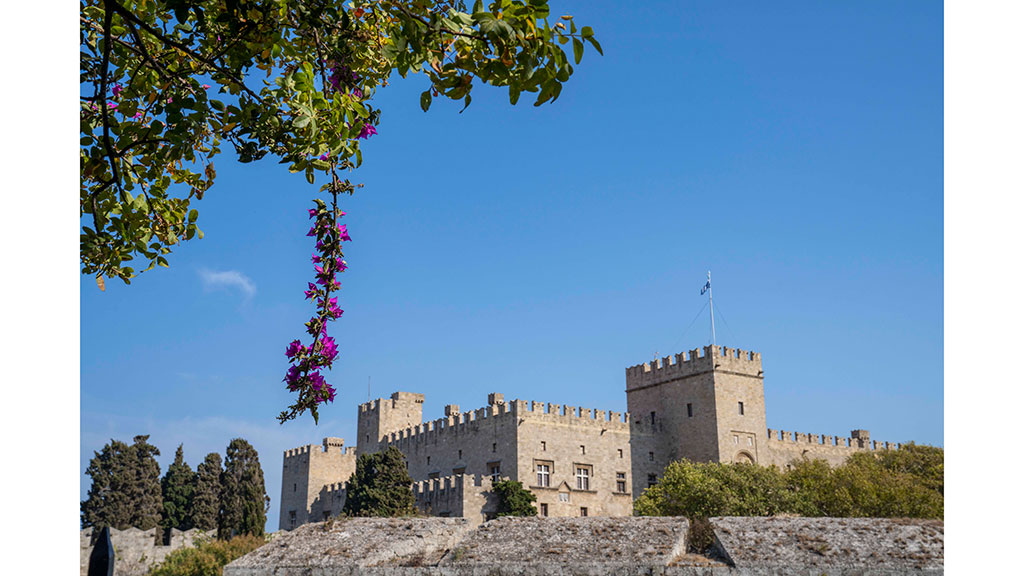
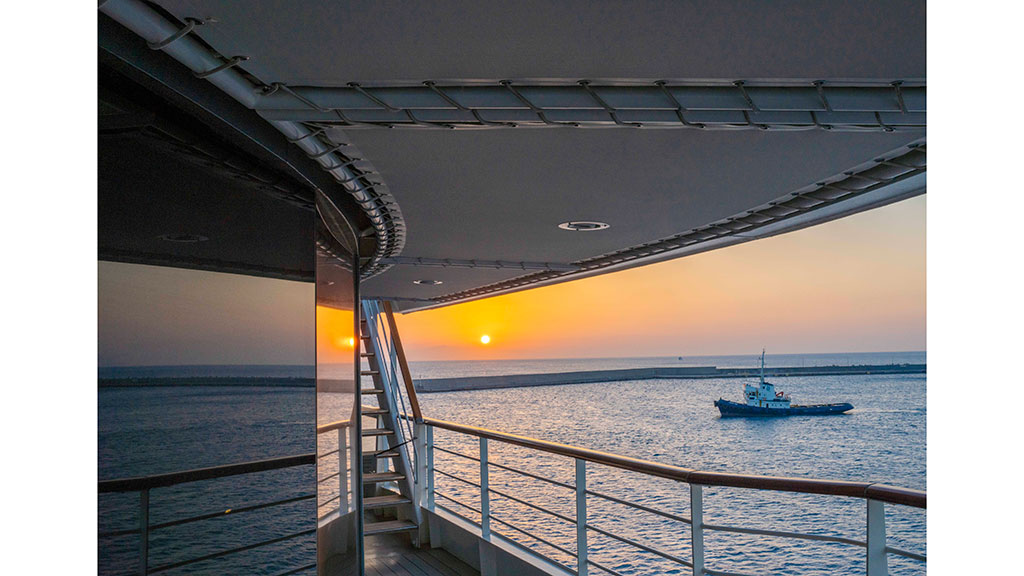
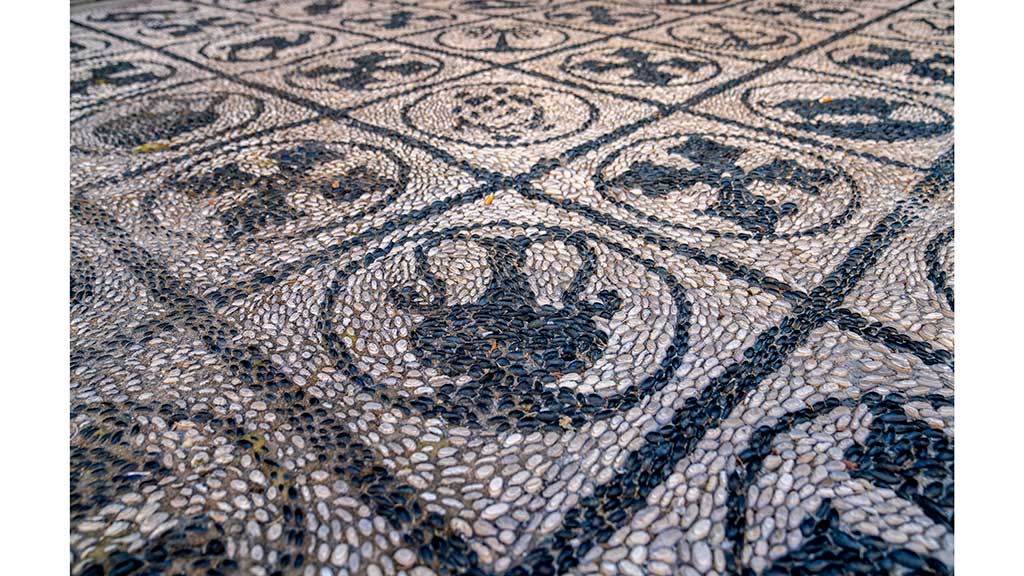
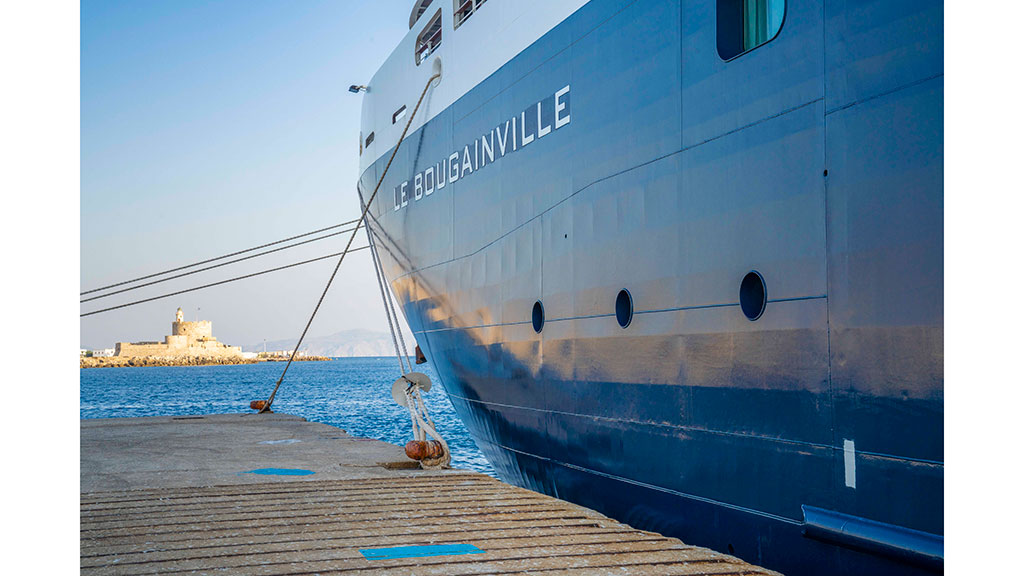
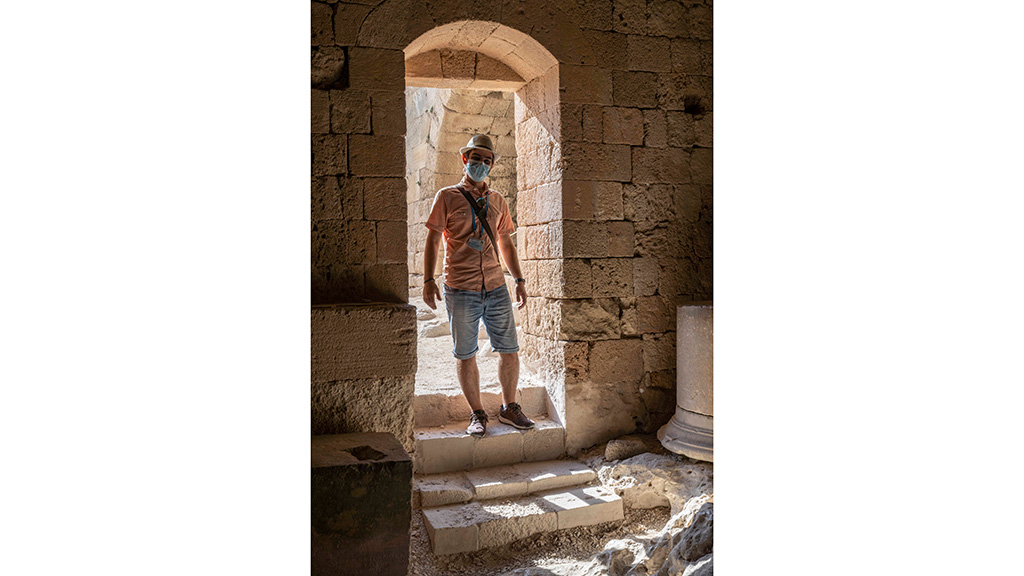
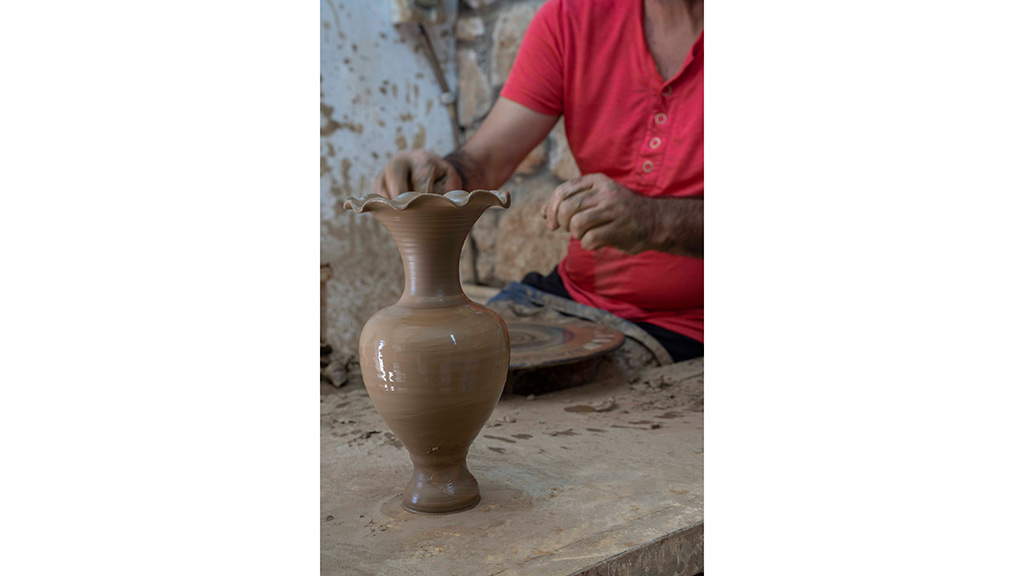










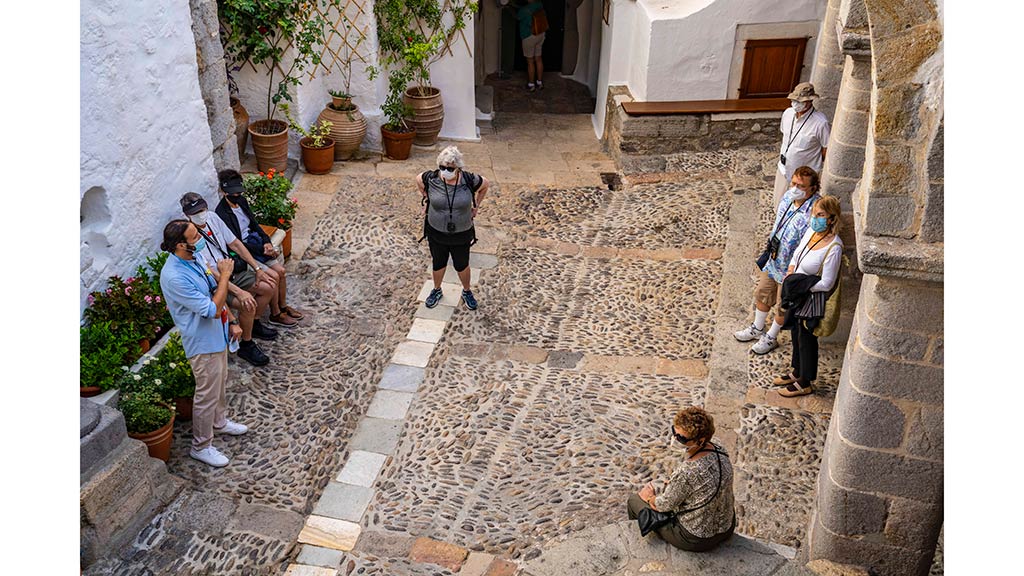
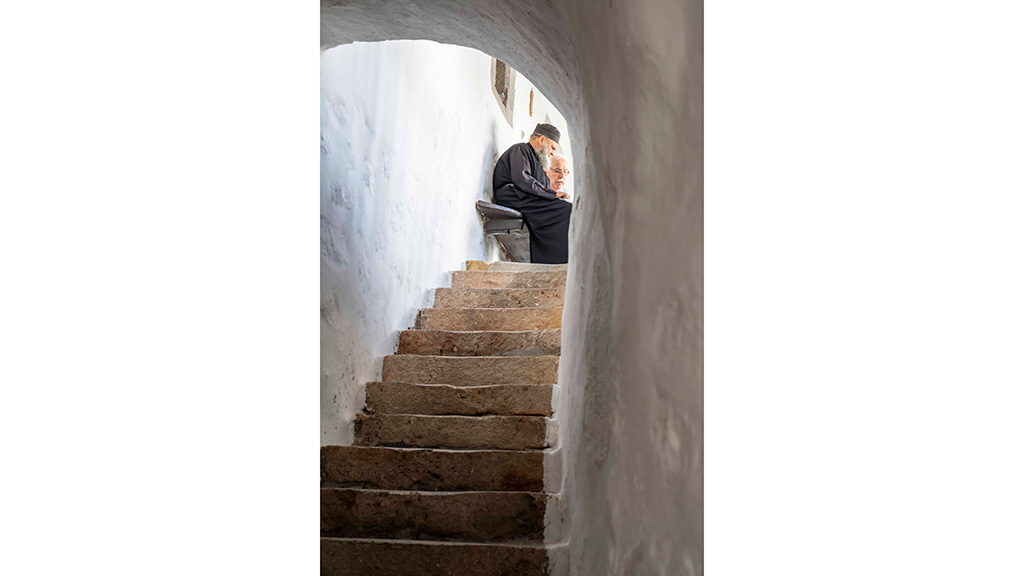
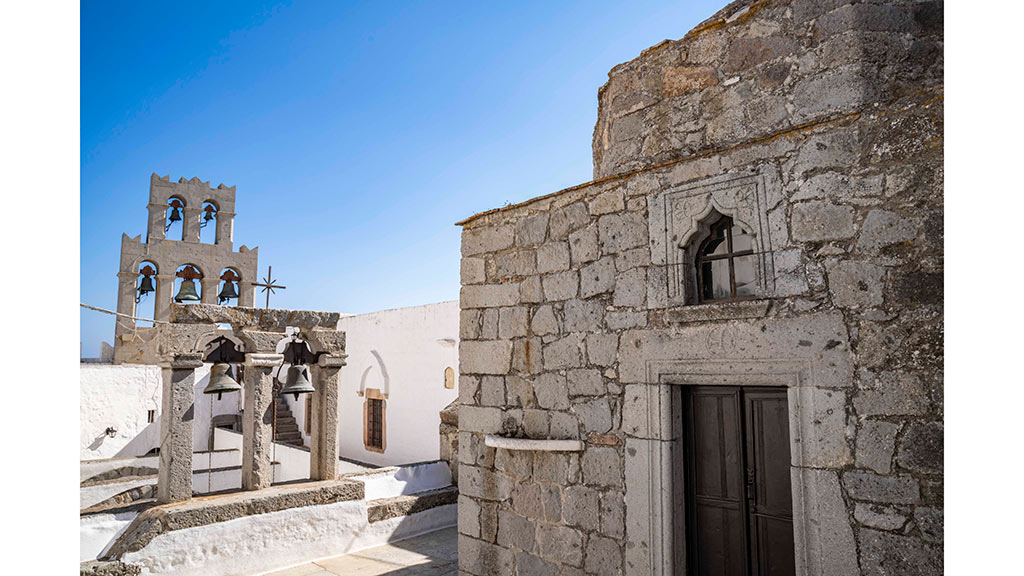
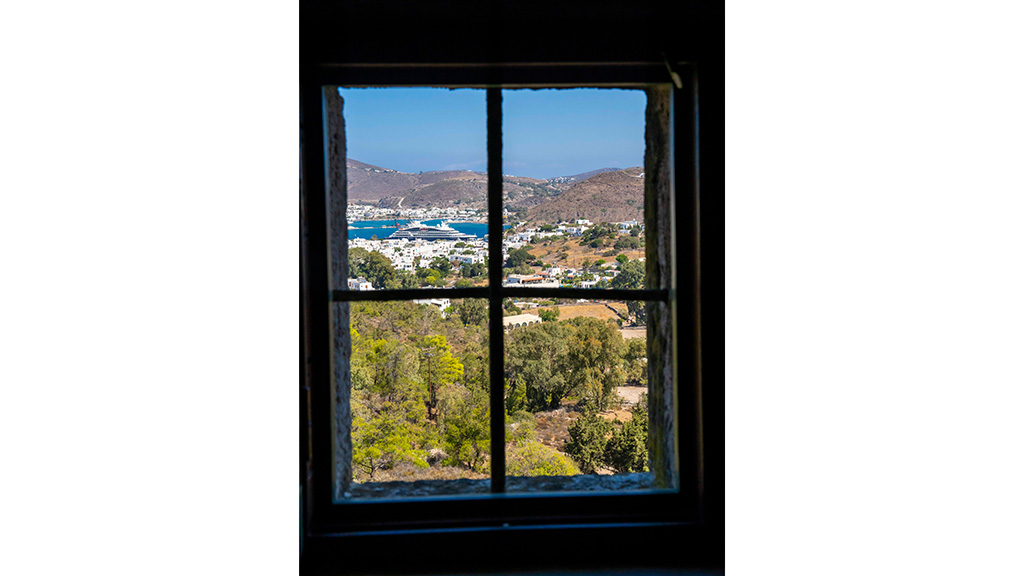
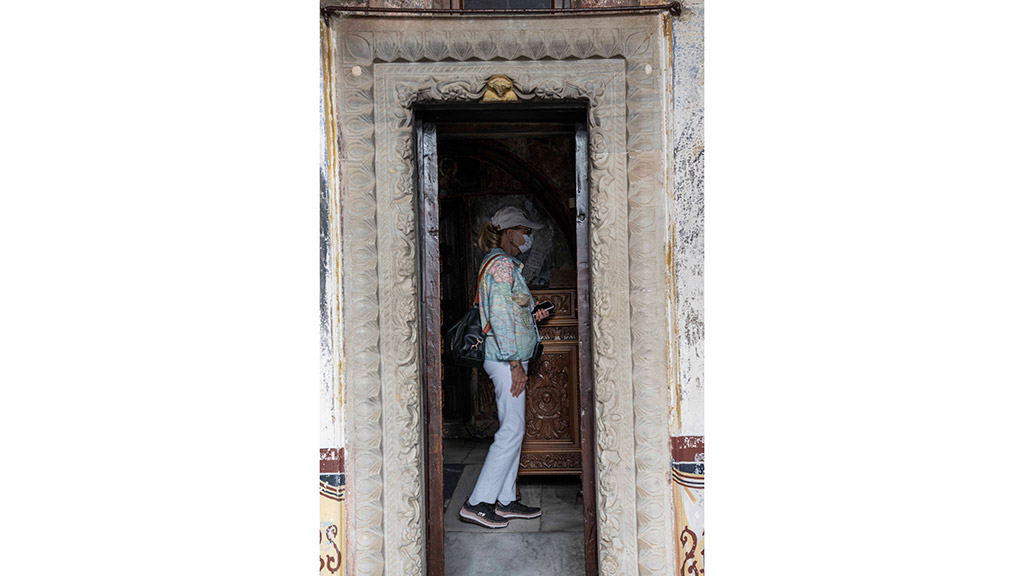
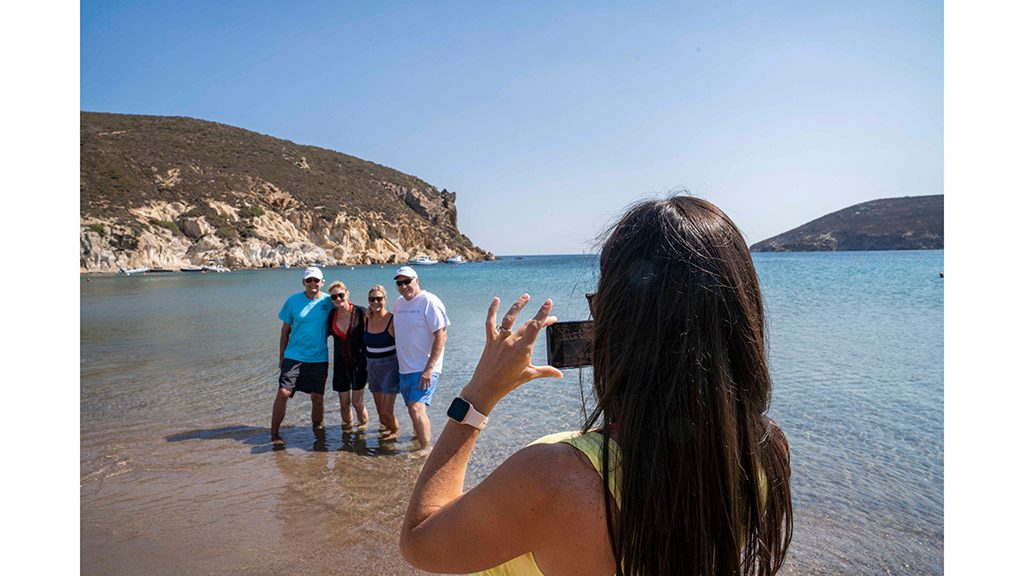
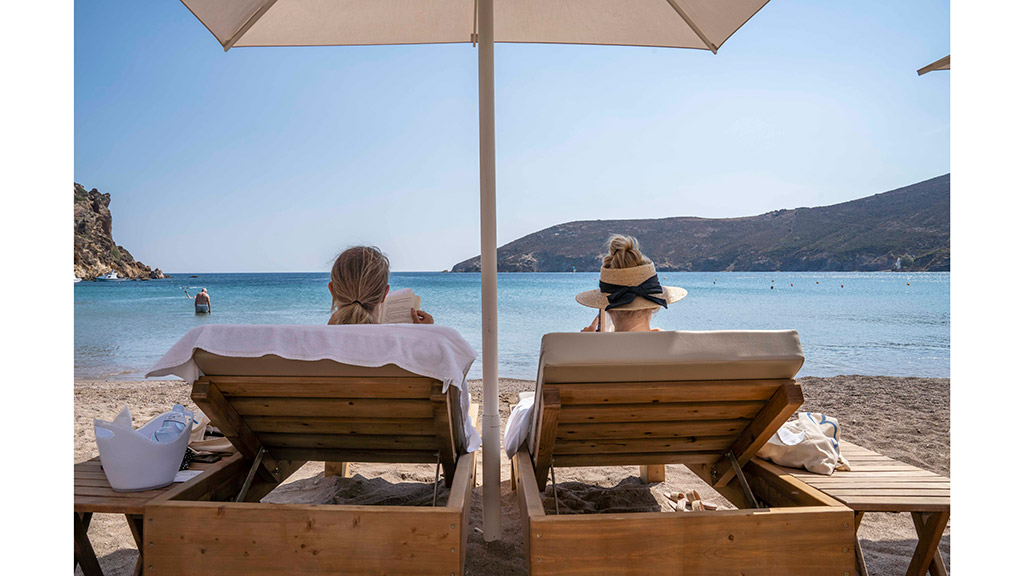
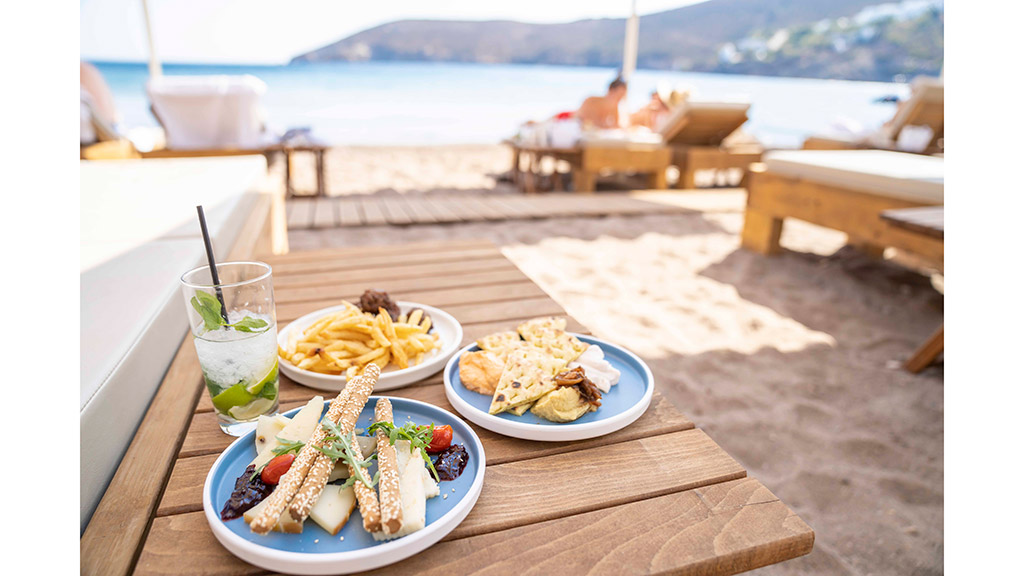
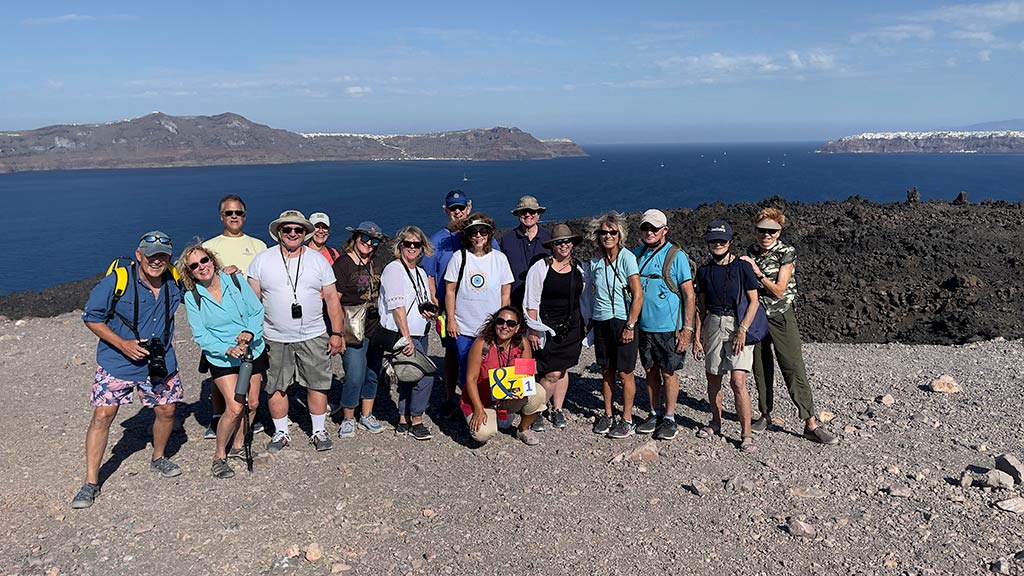
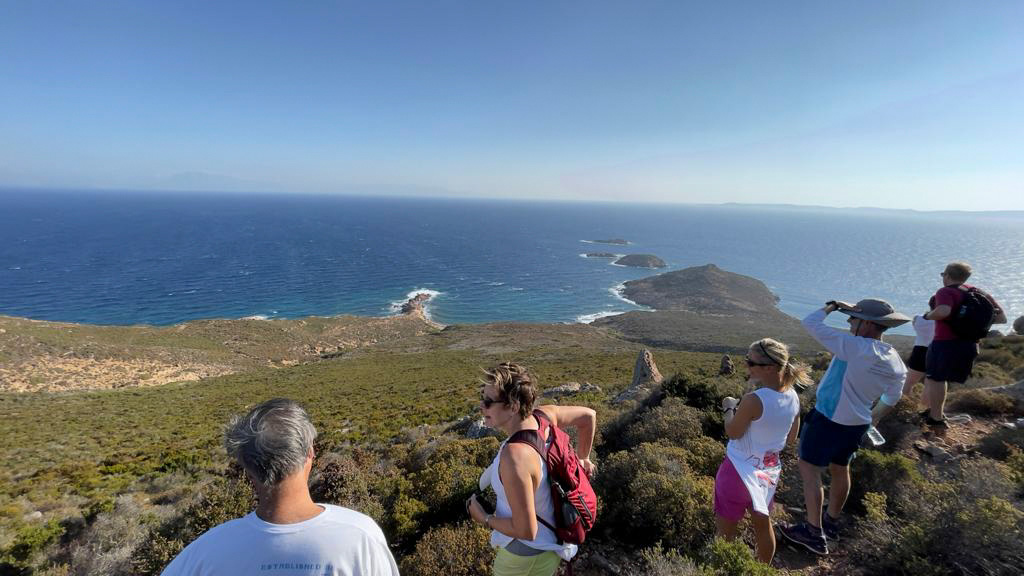










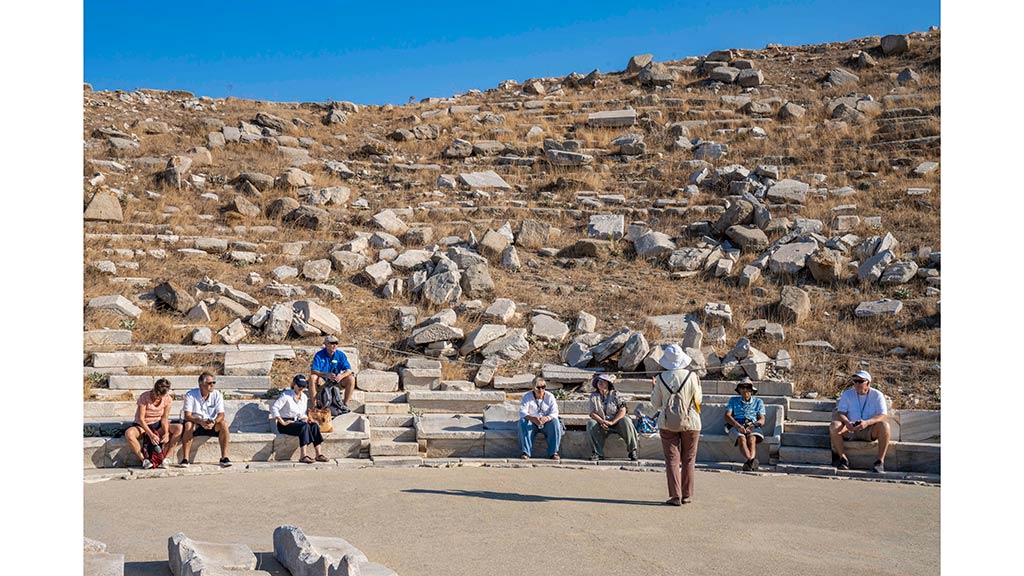
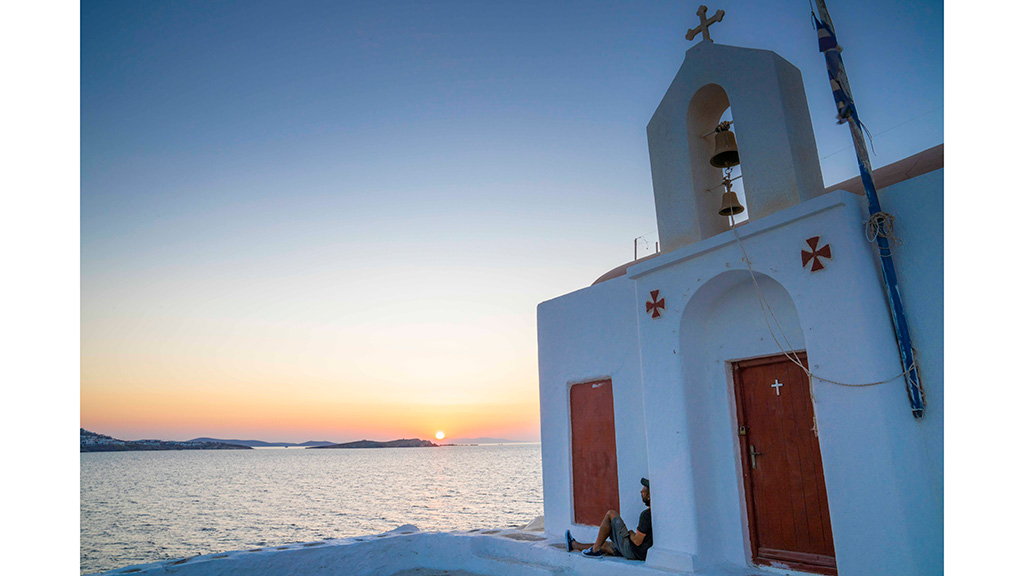
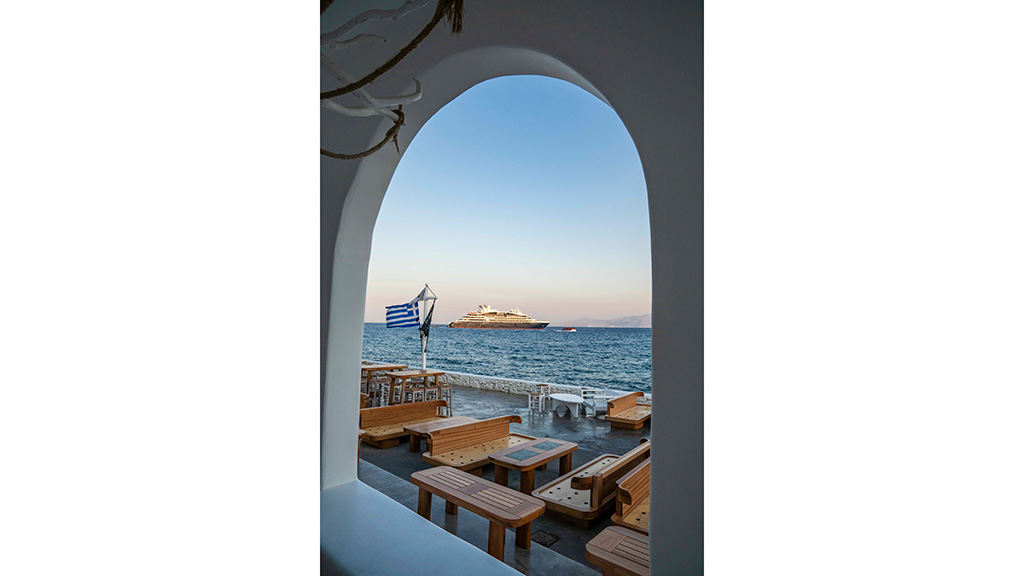
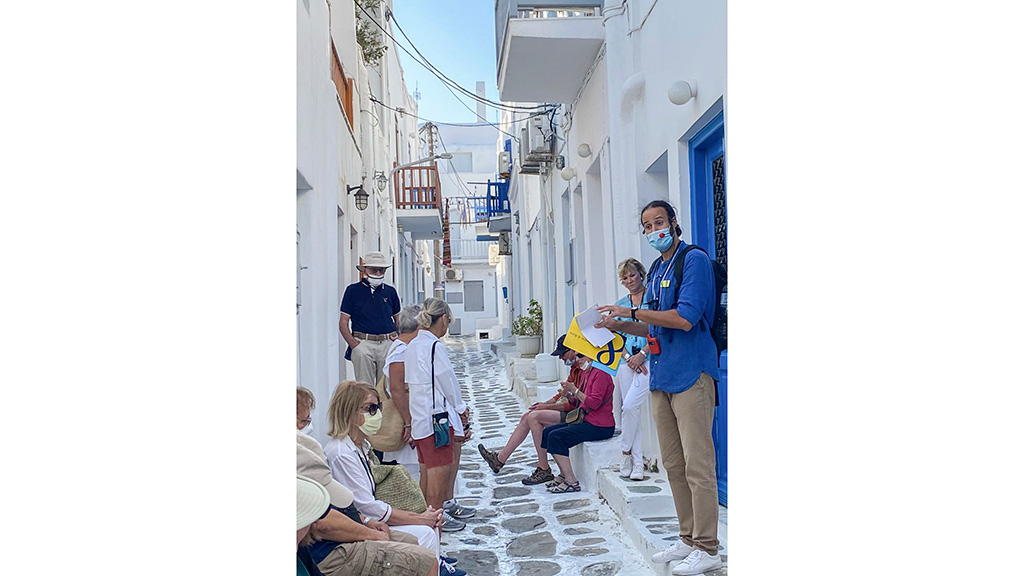
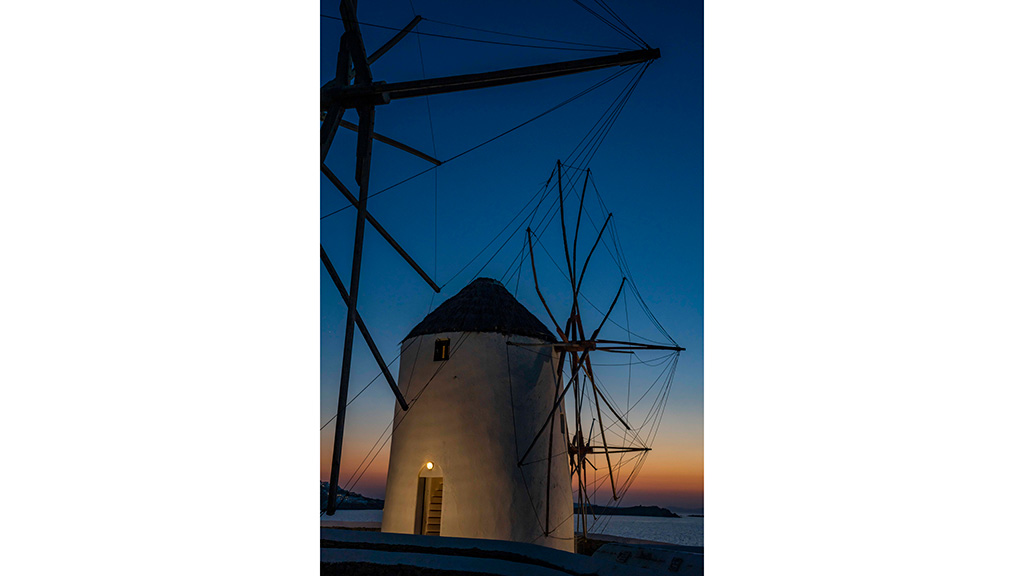
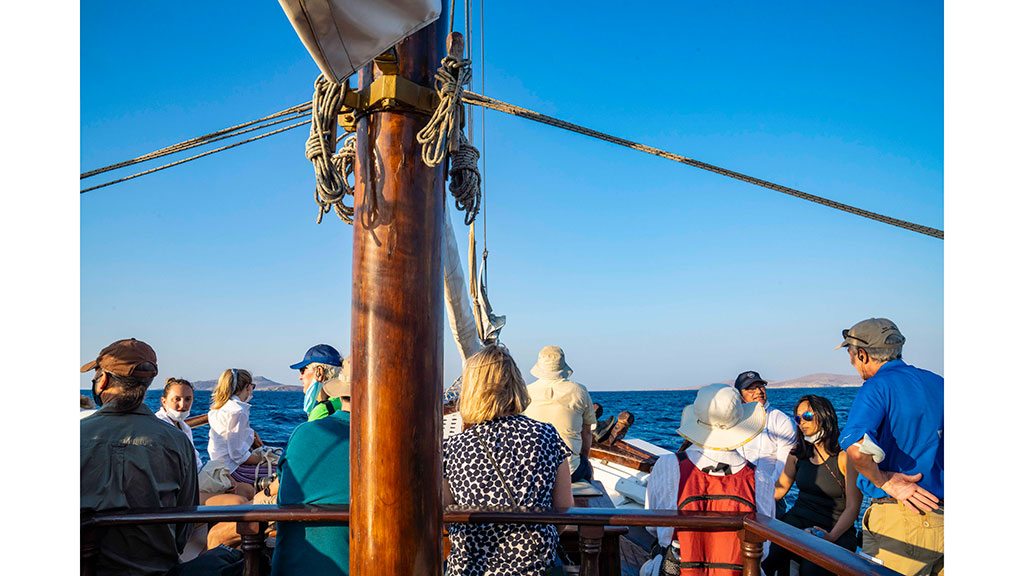
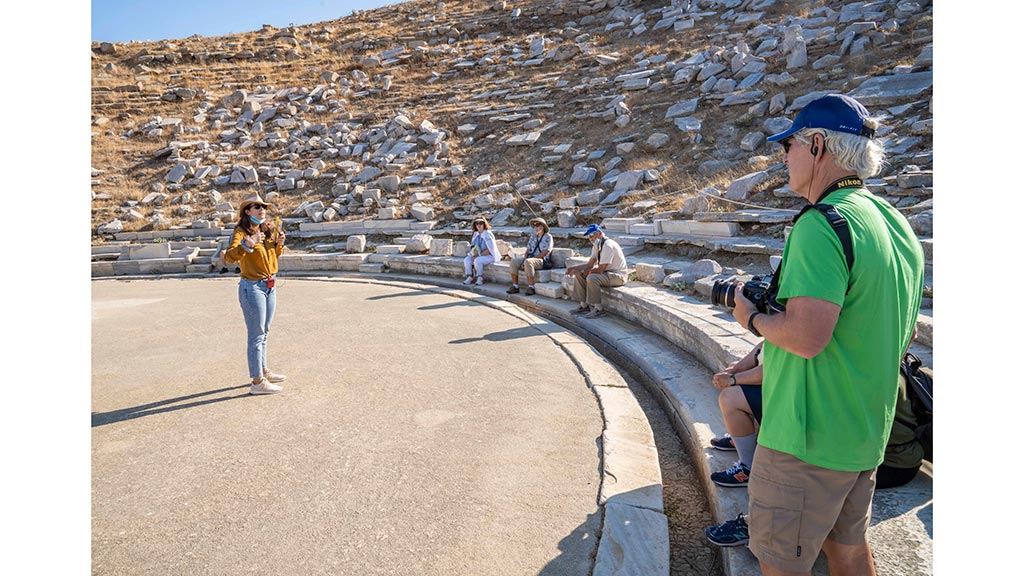
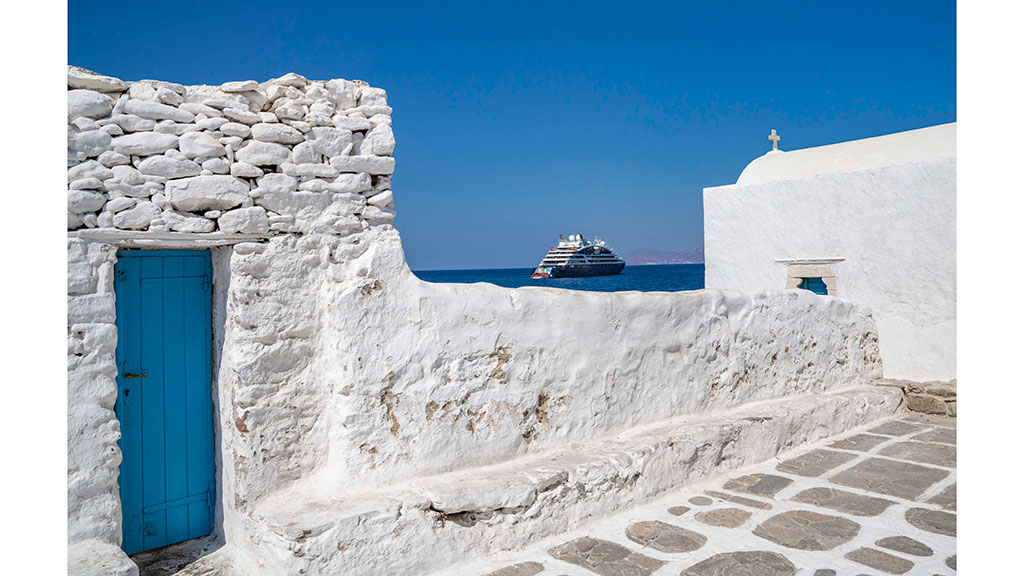
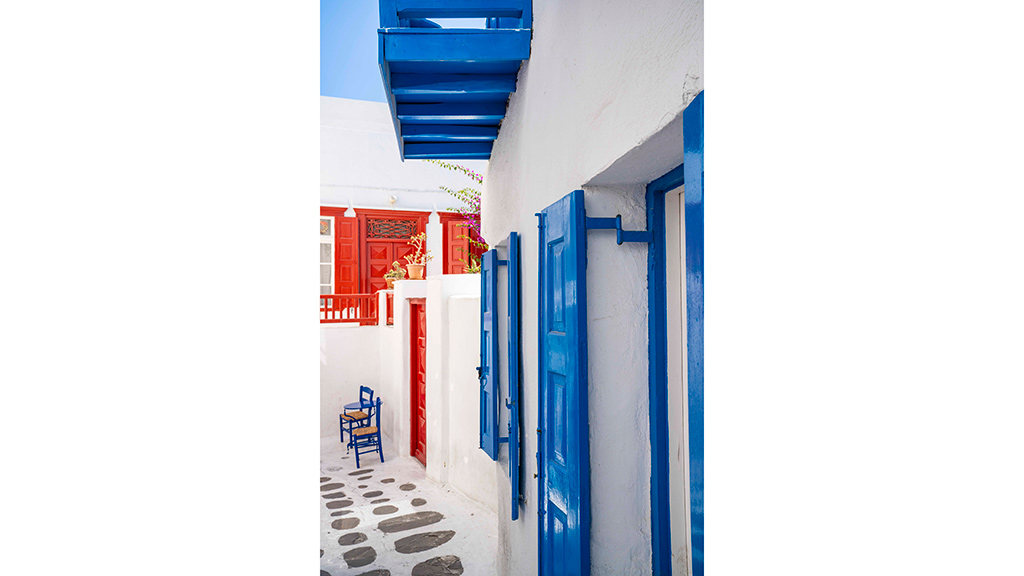
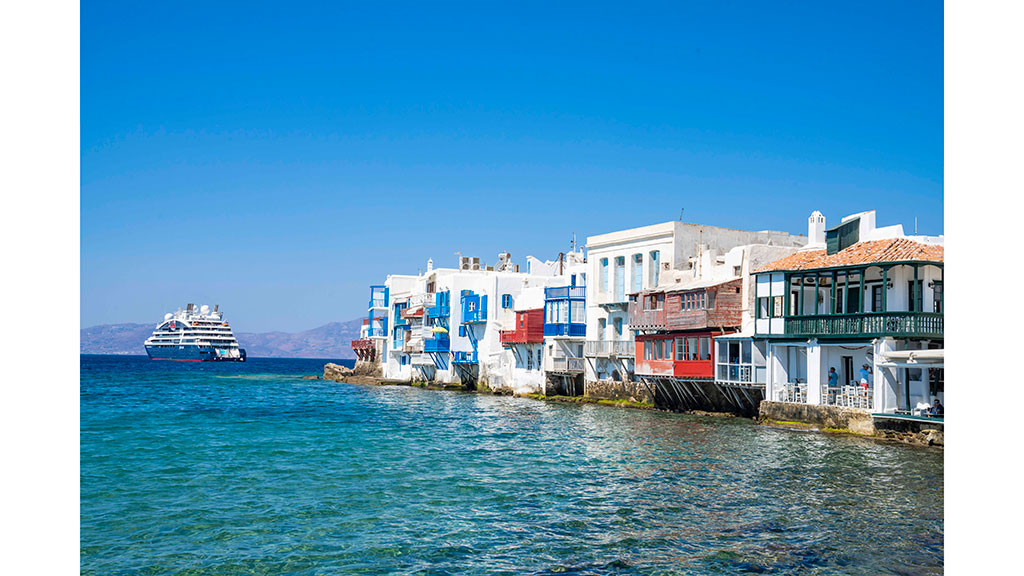









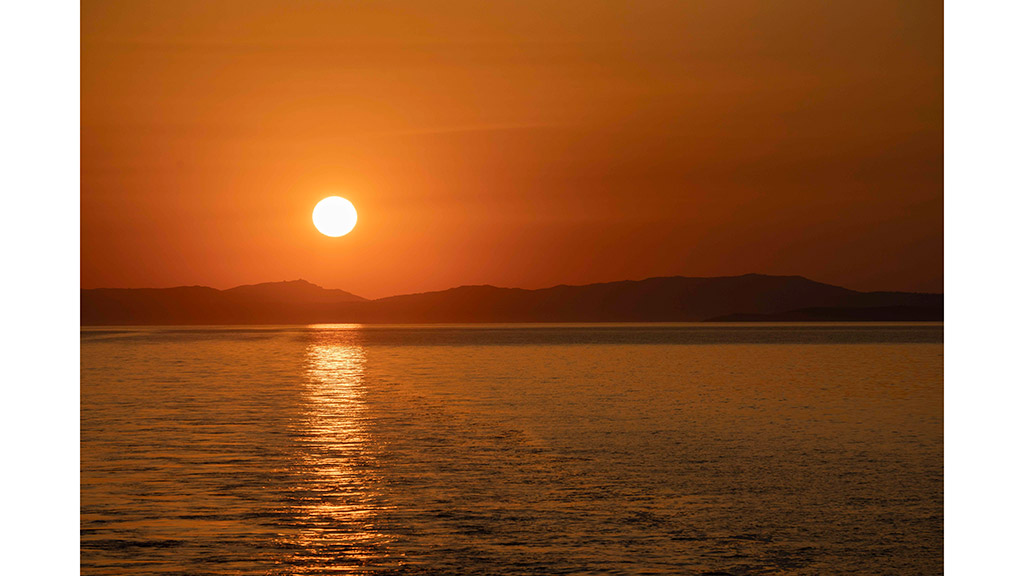
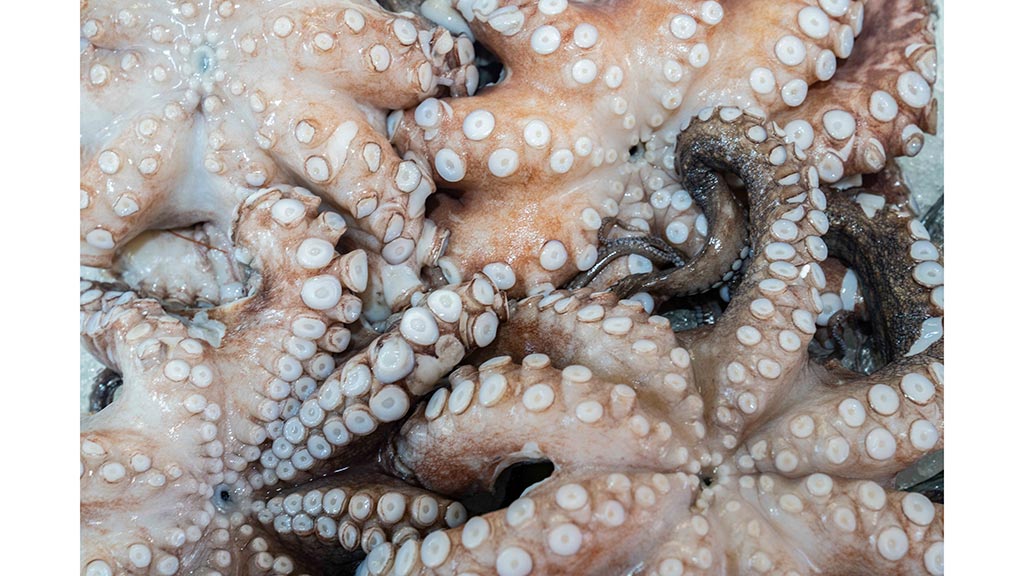
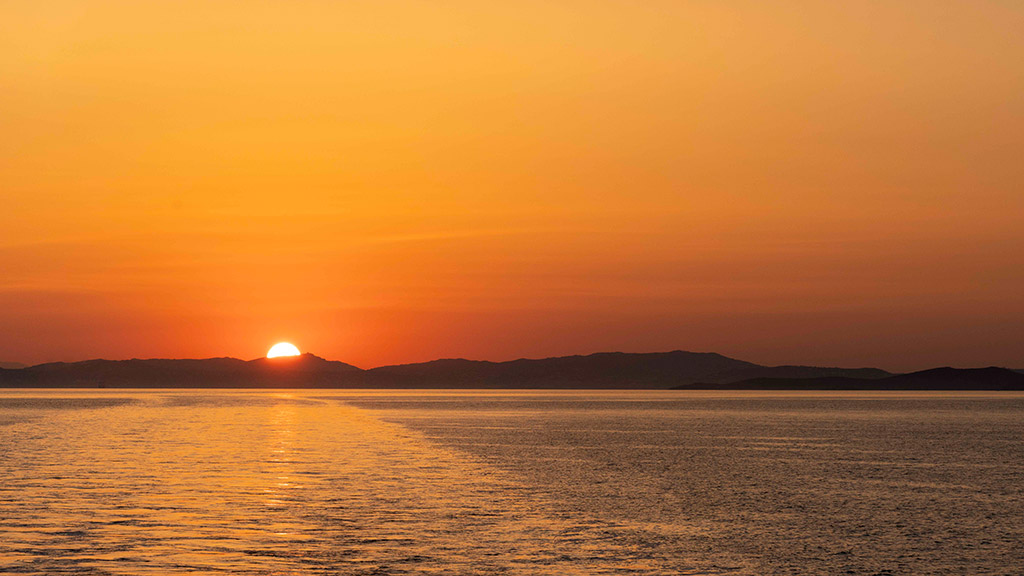
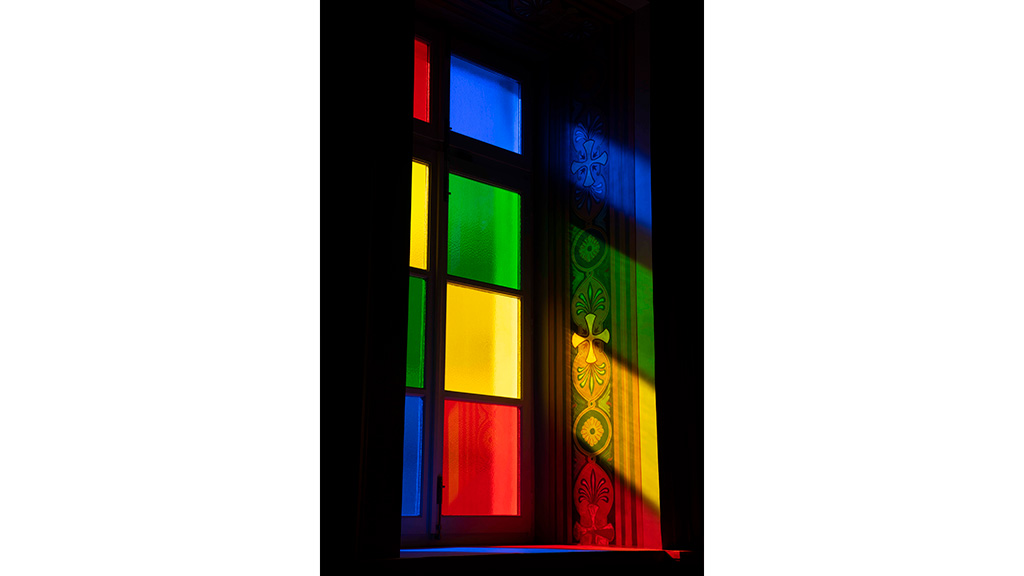
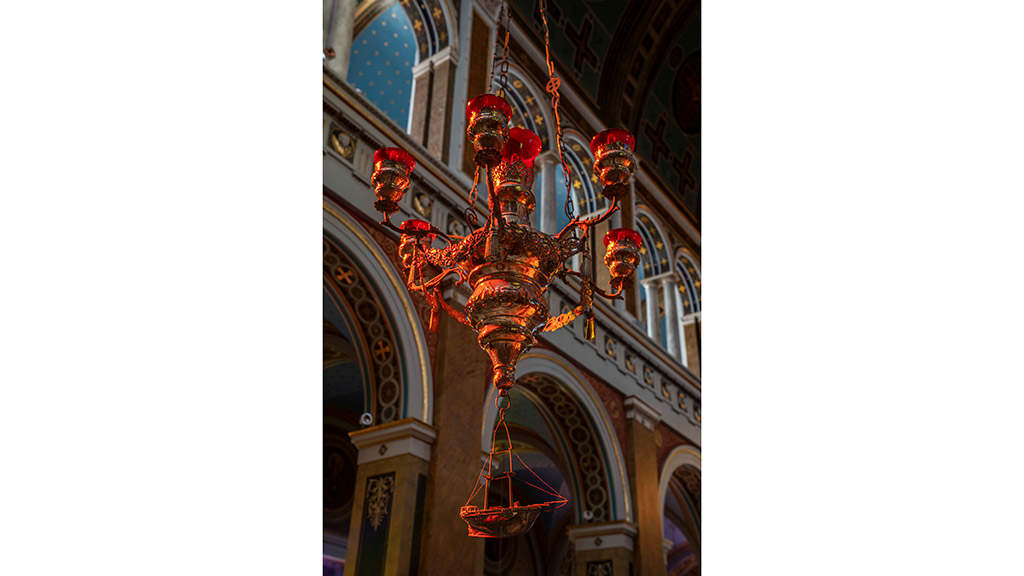
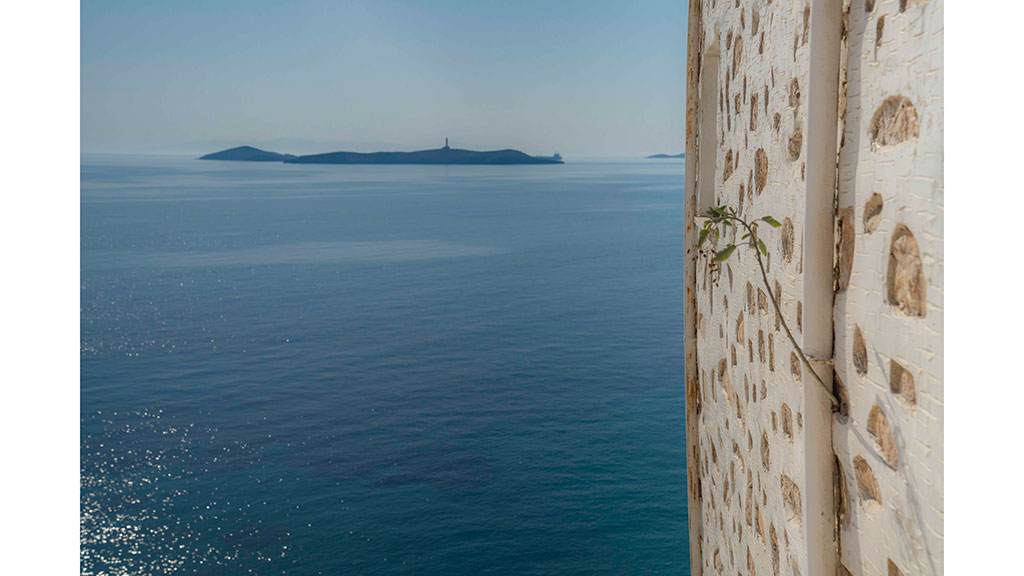
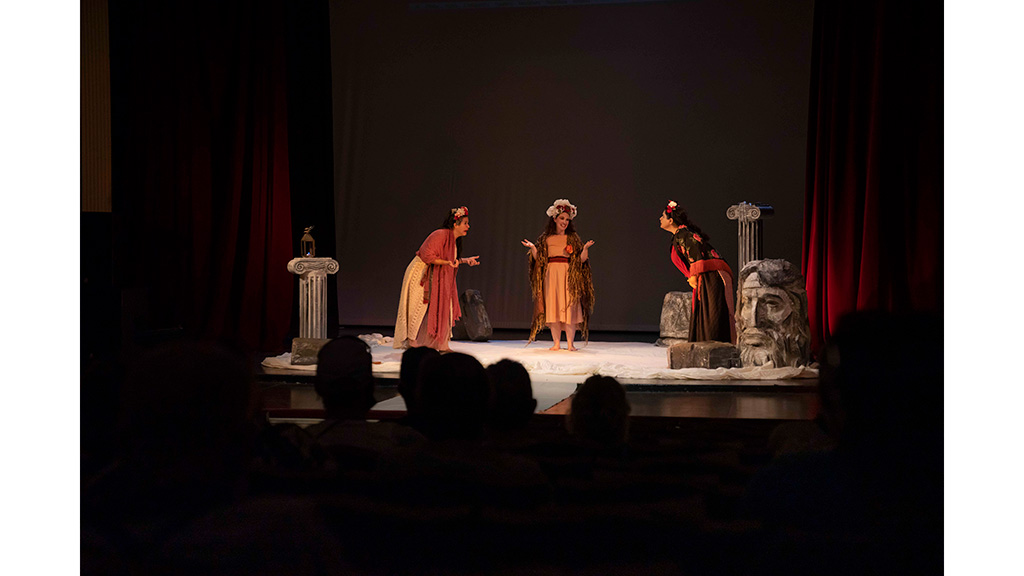





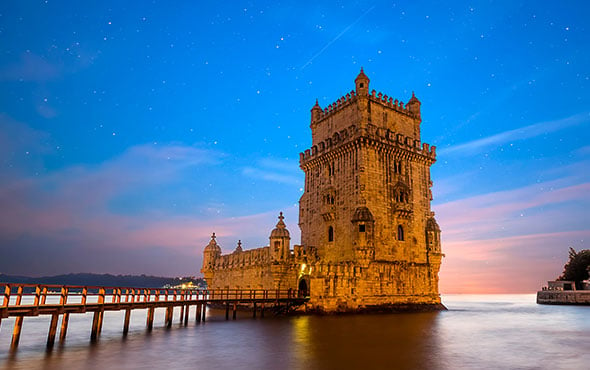

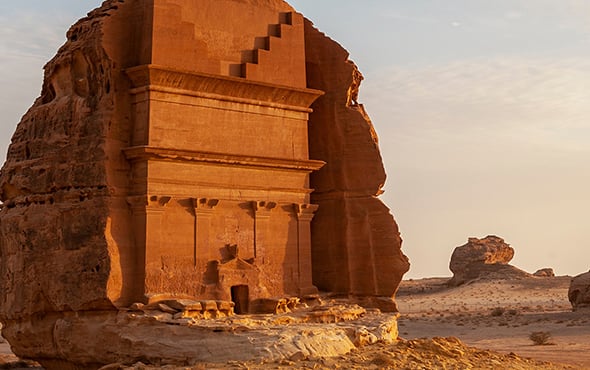
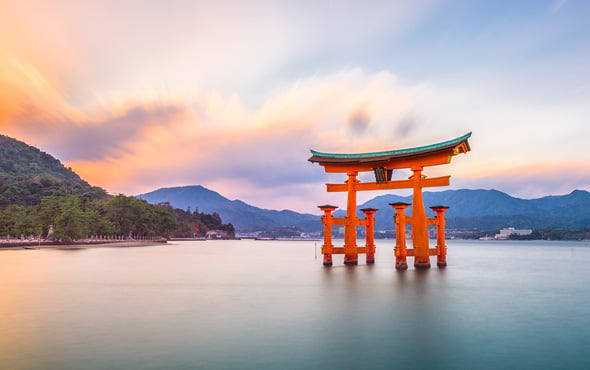
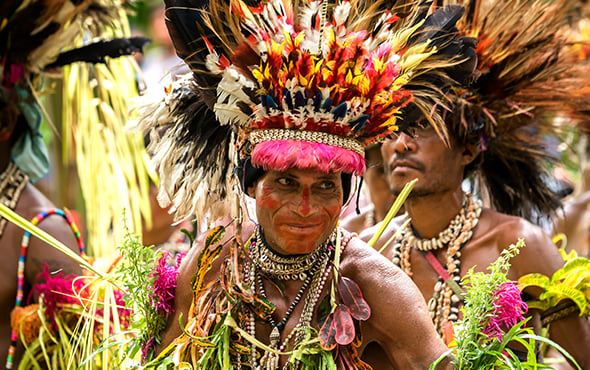

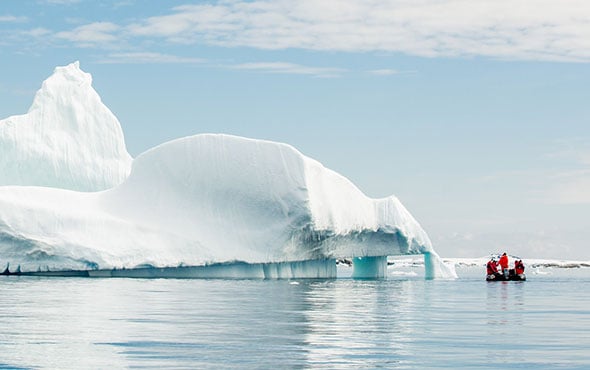





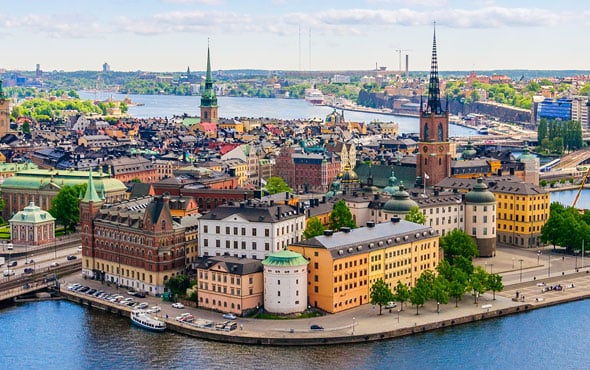


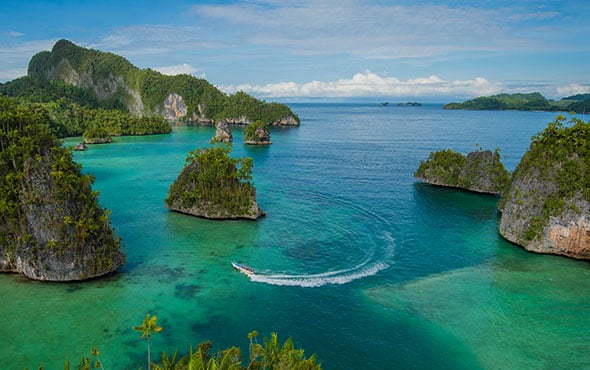
 The Americas
The Americas
 Europe, Middle East and Africa
Europe, Middle East and Africa Australia, NZ and Asia
Australia, NZ and Asia